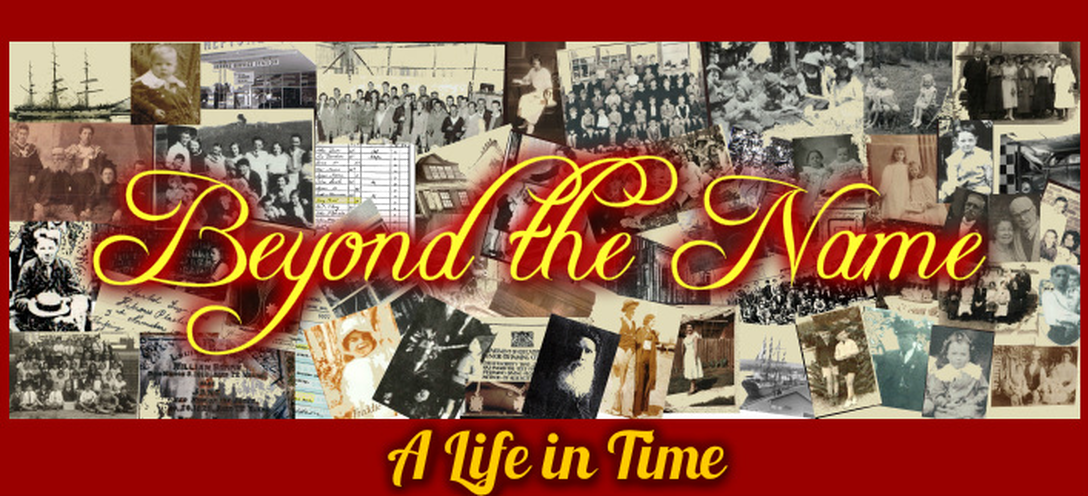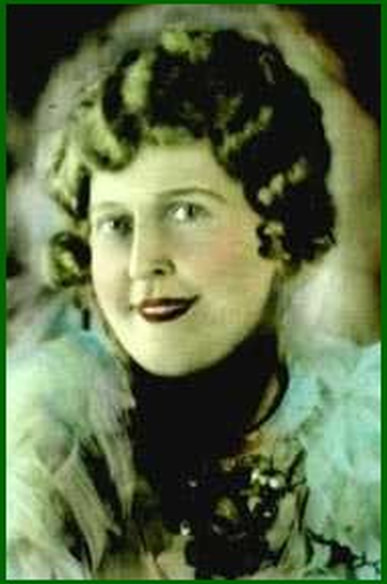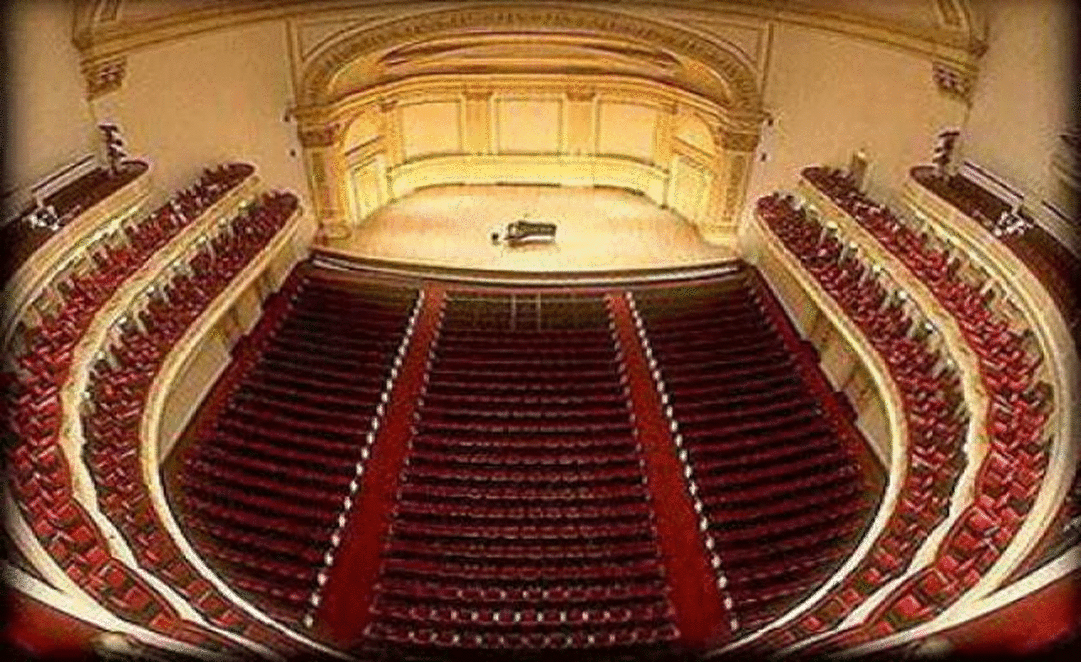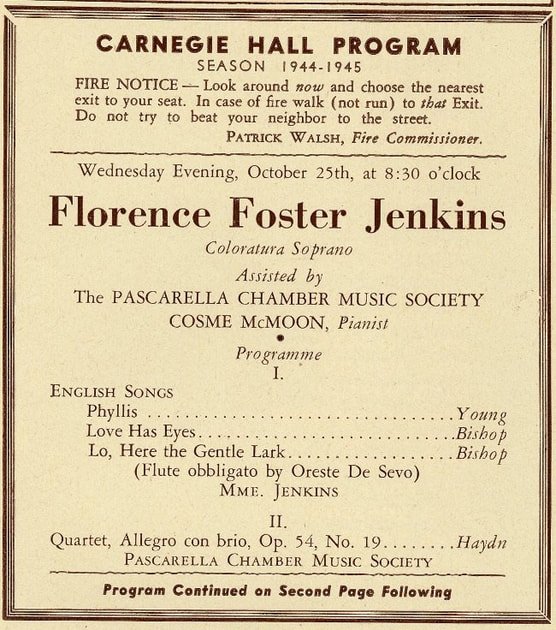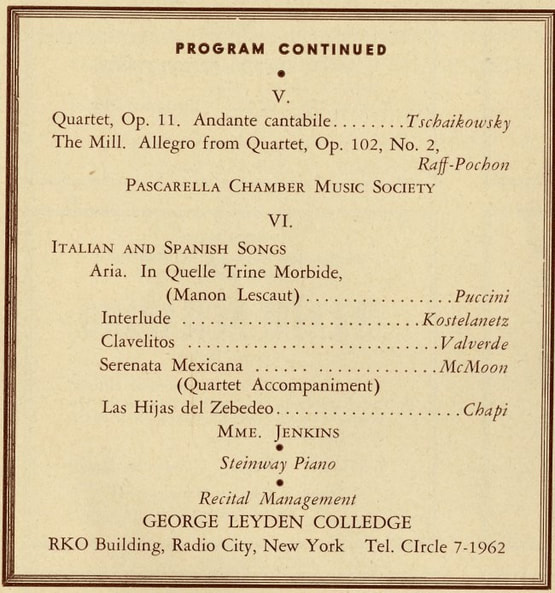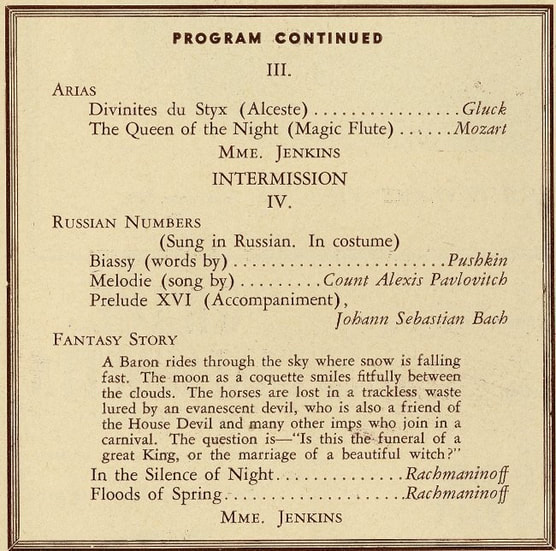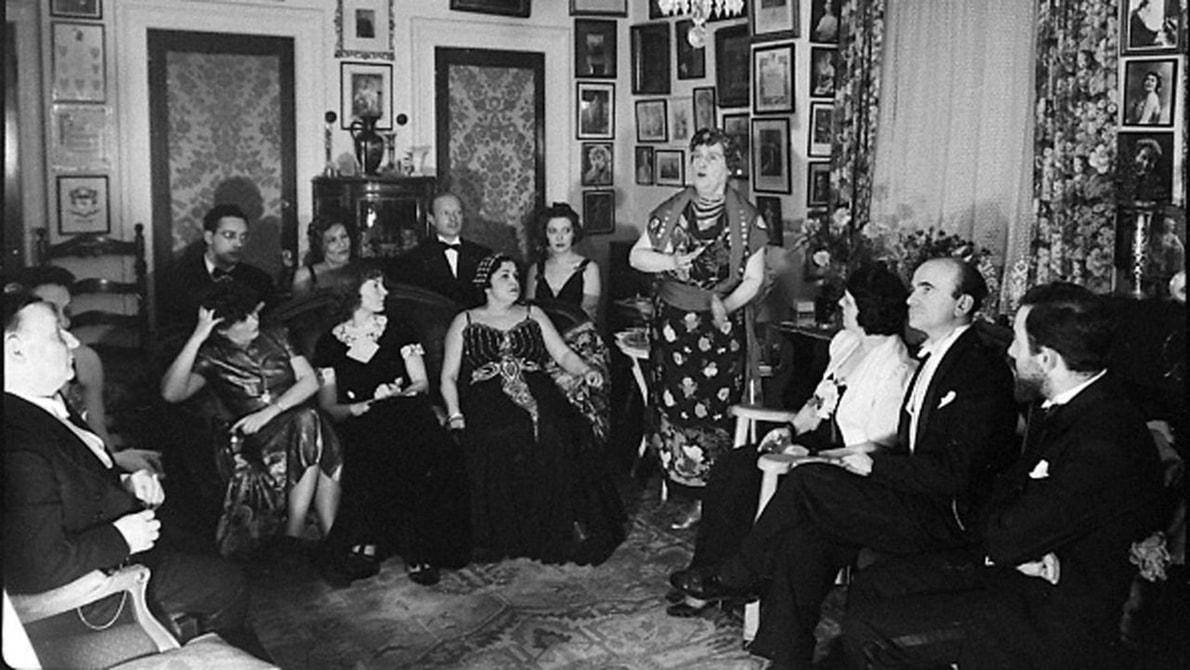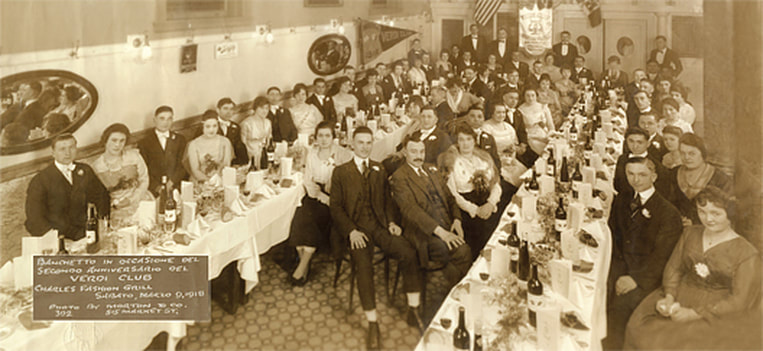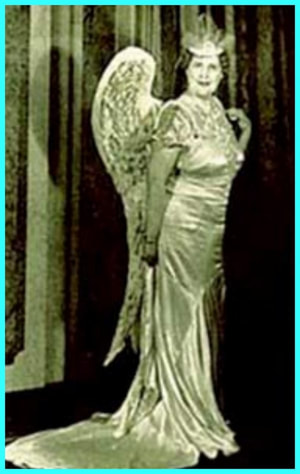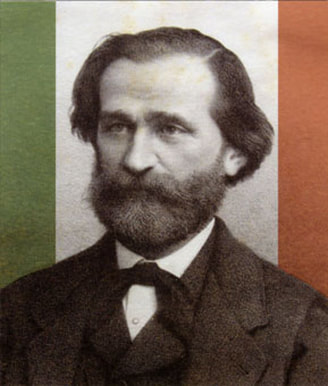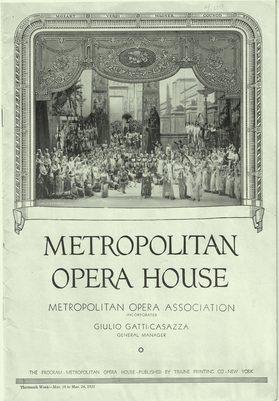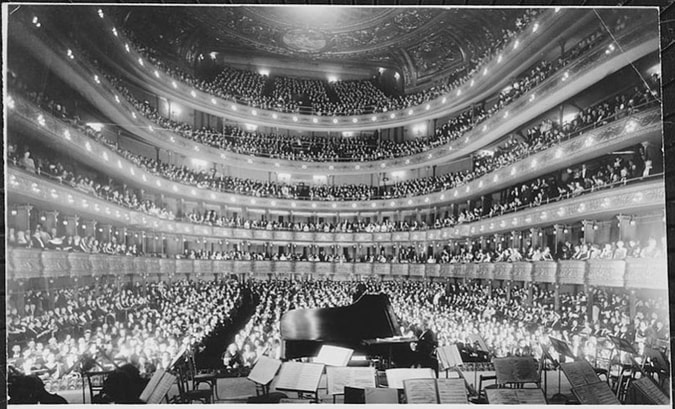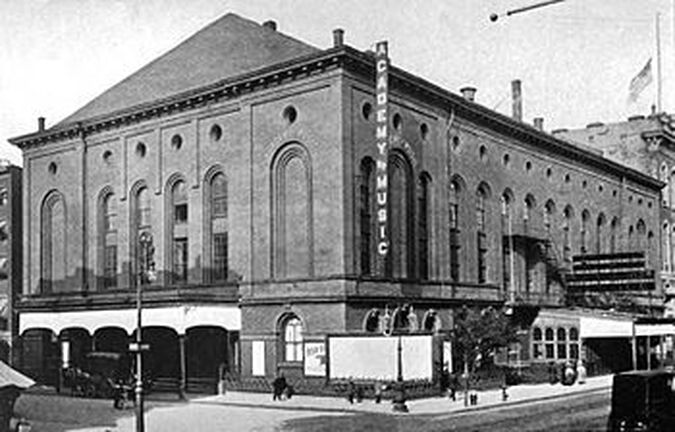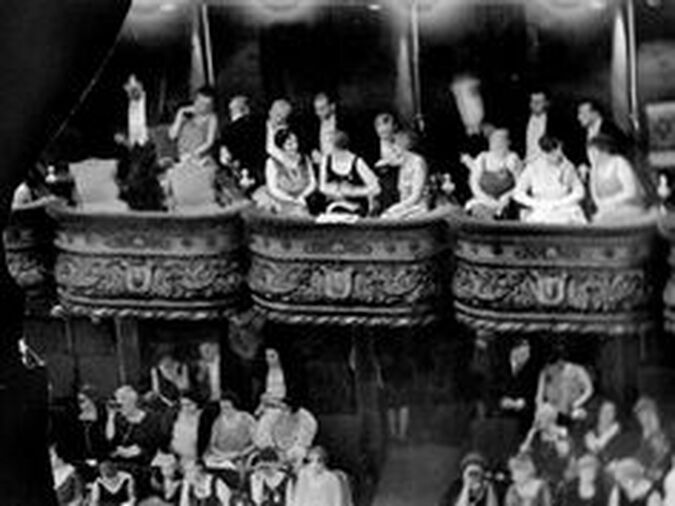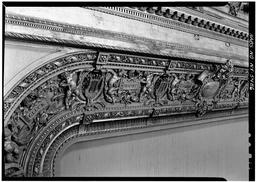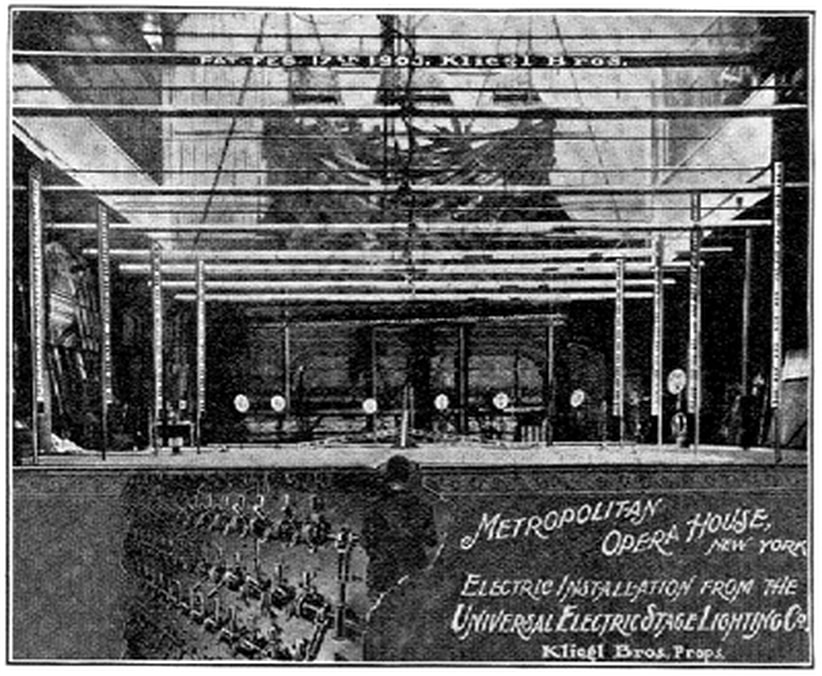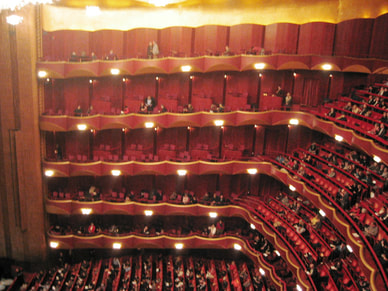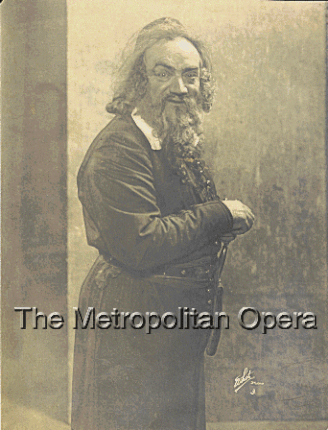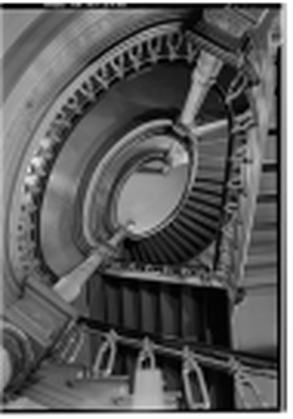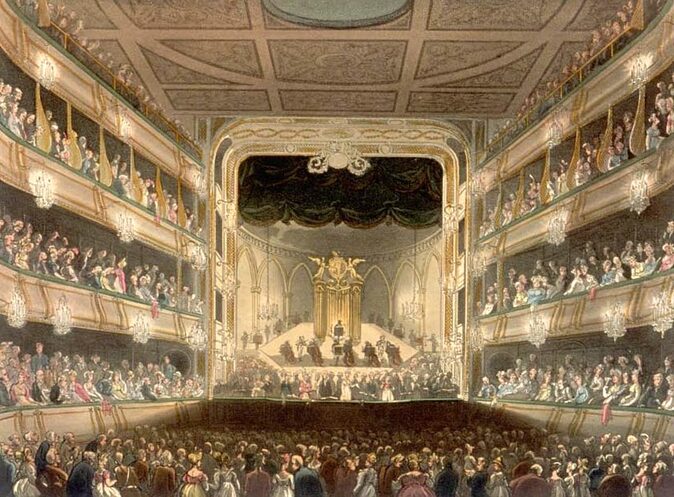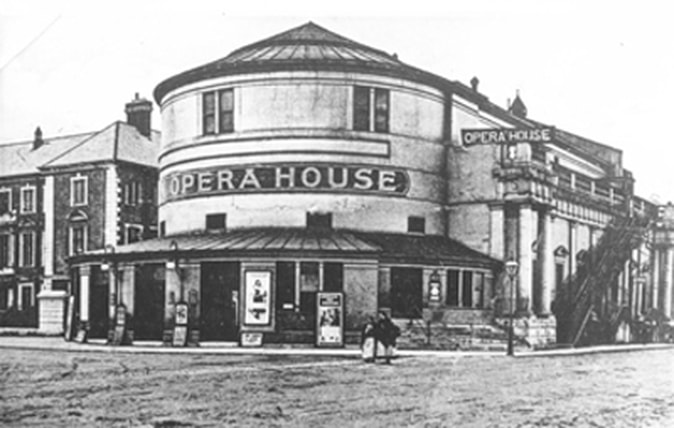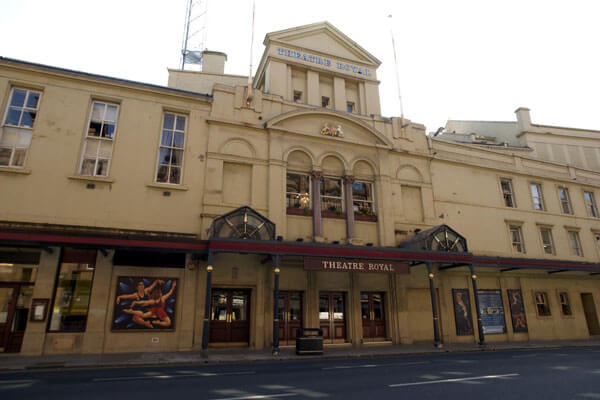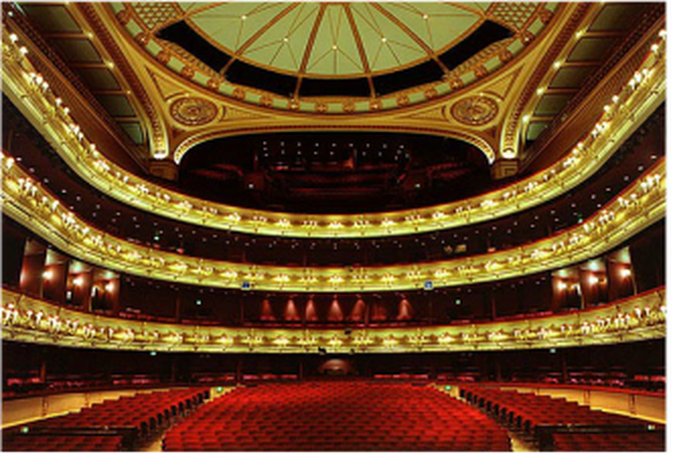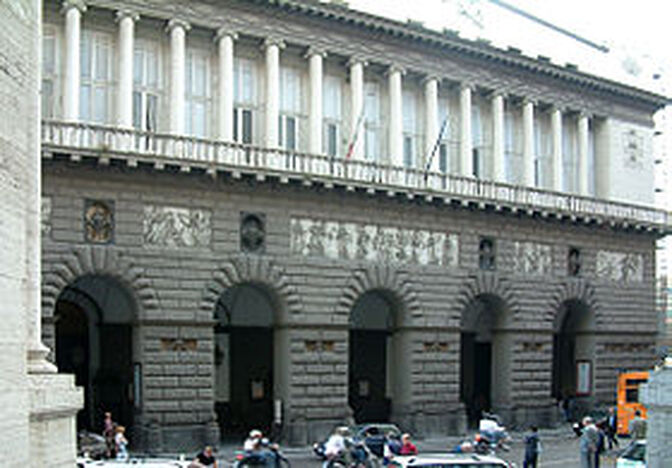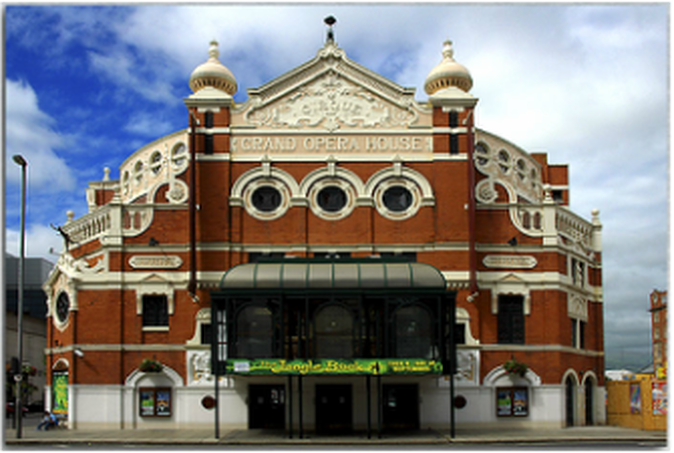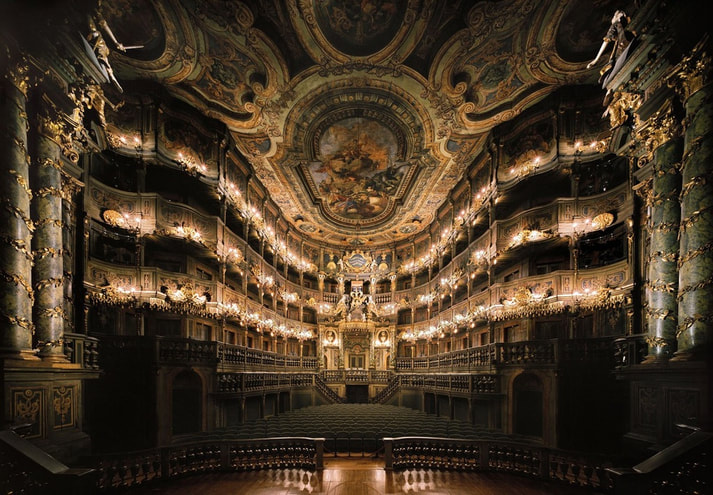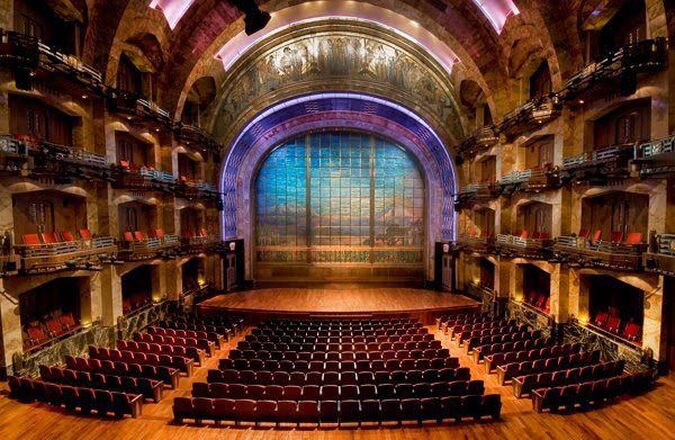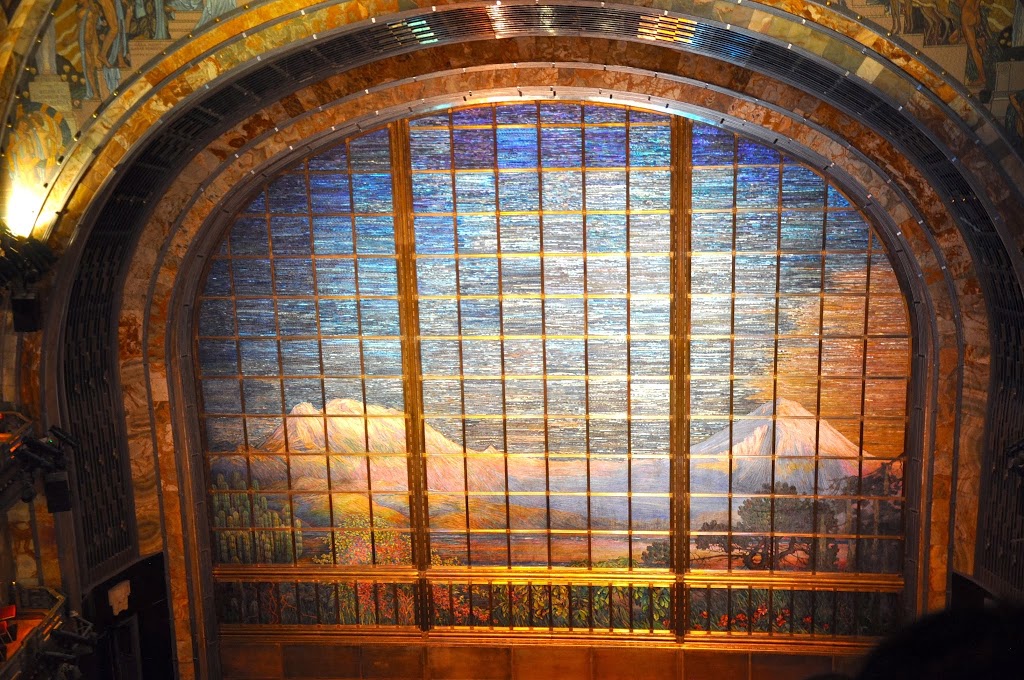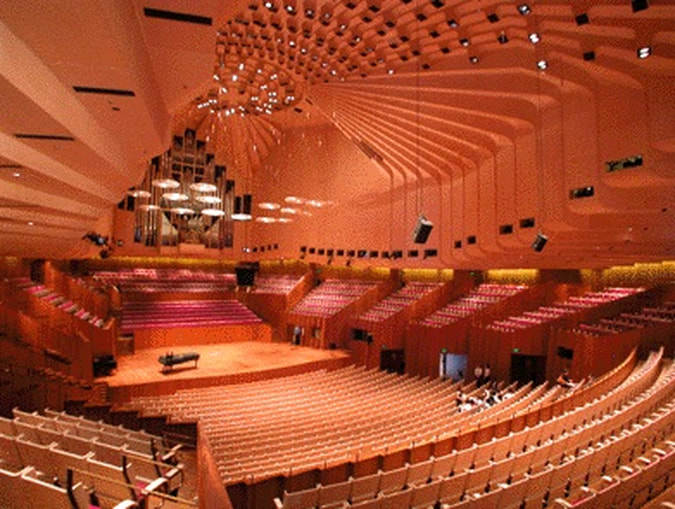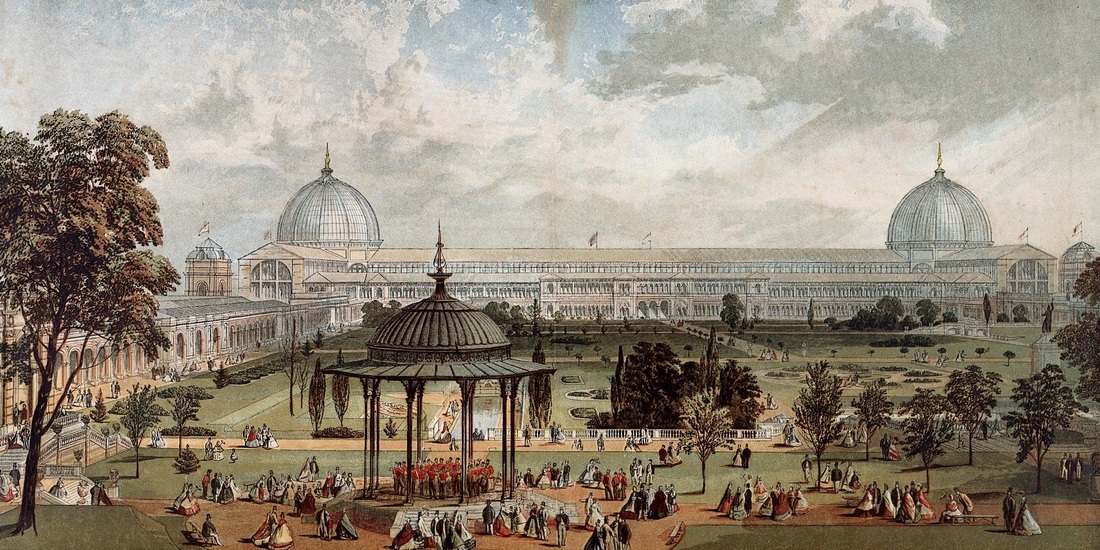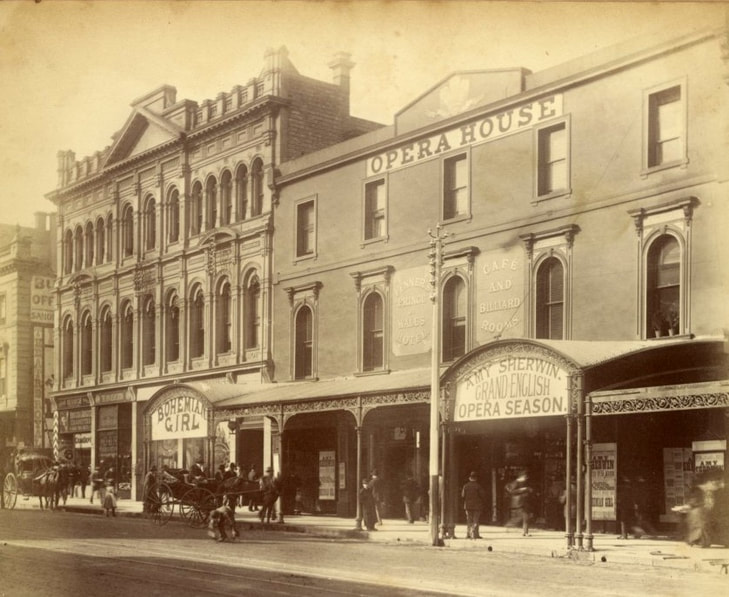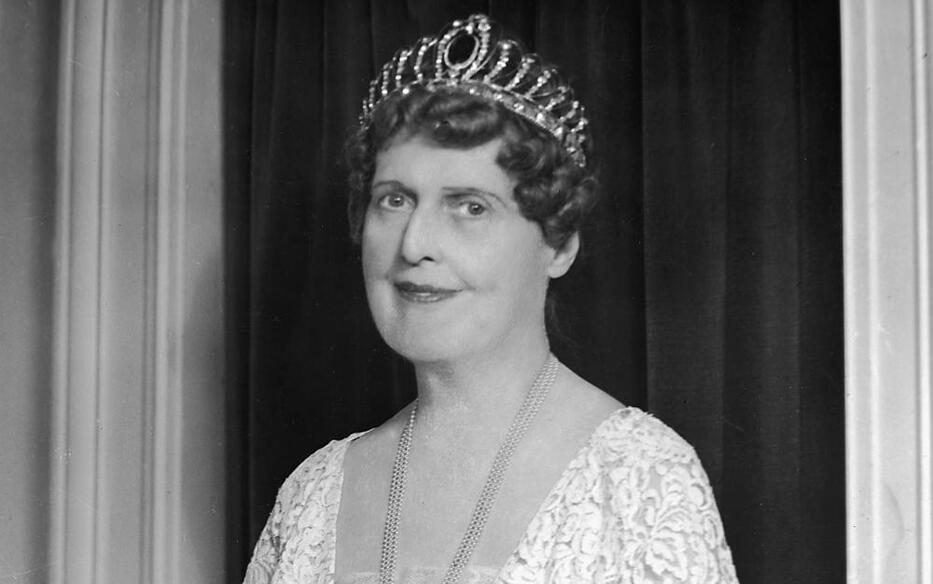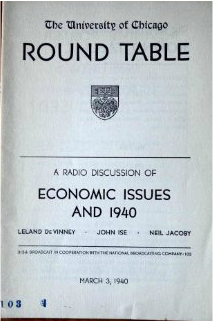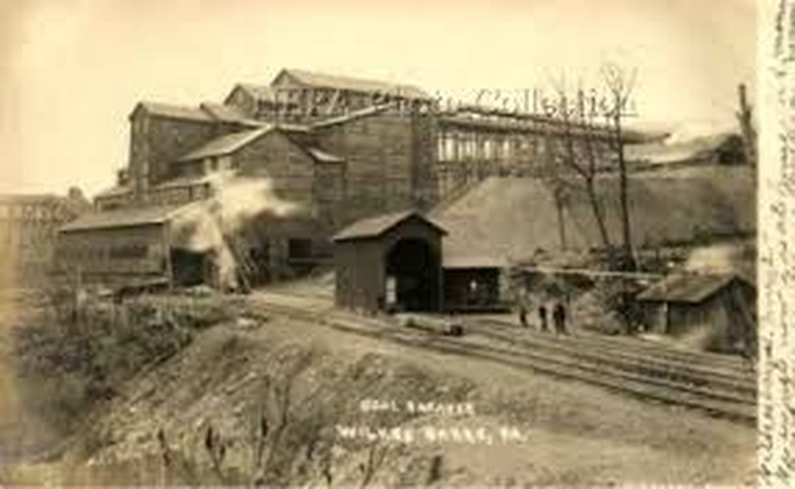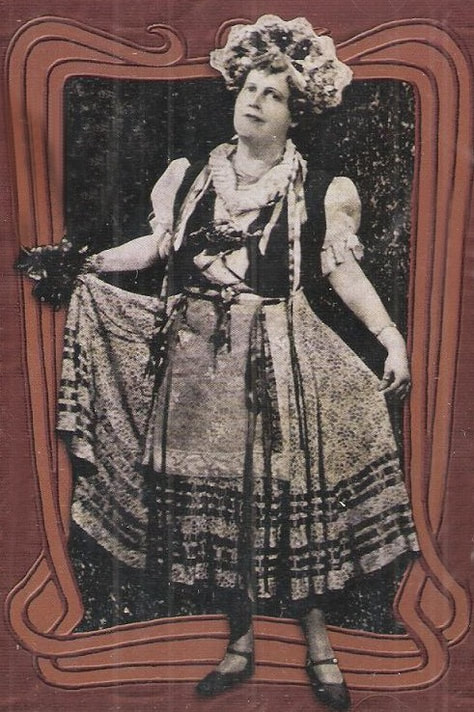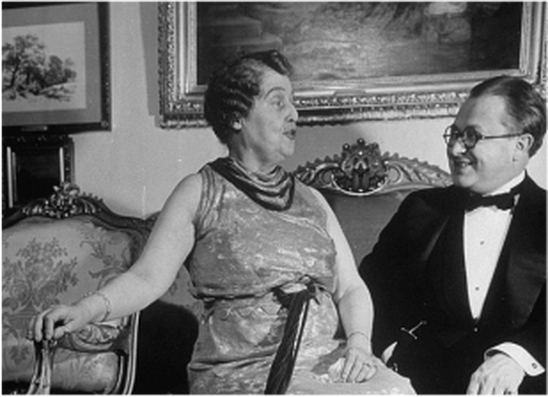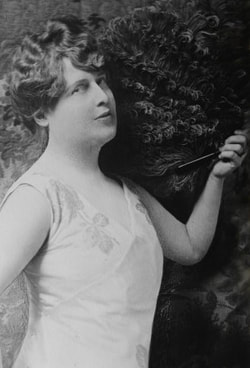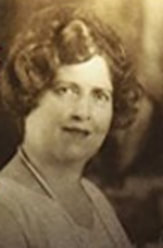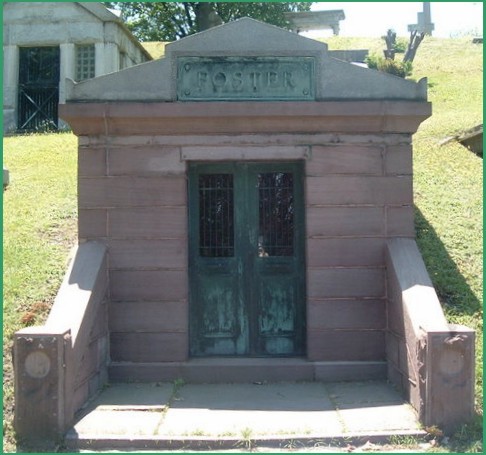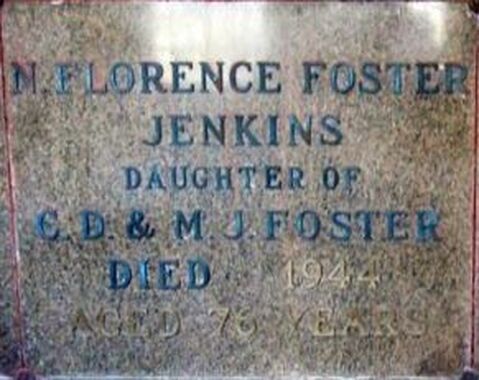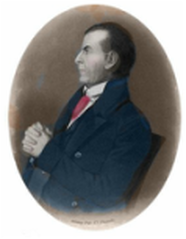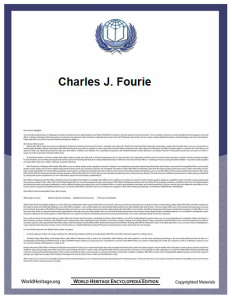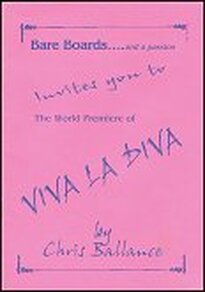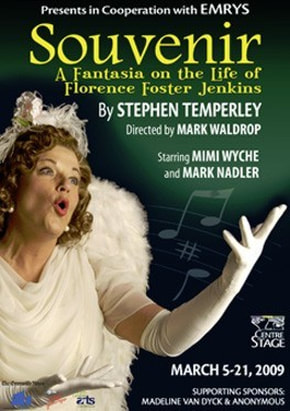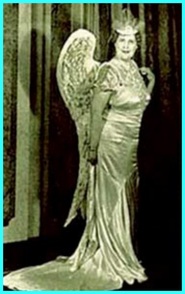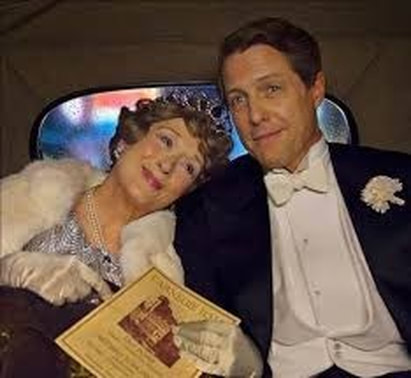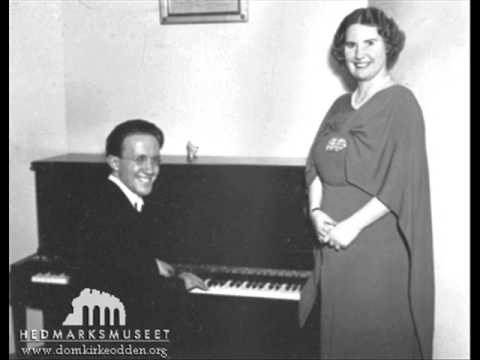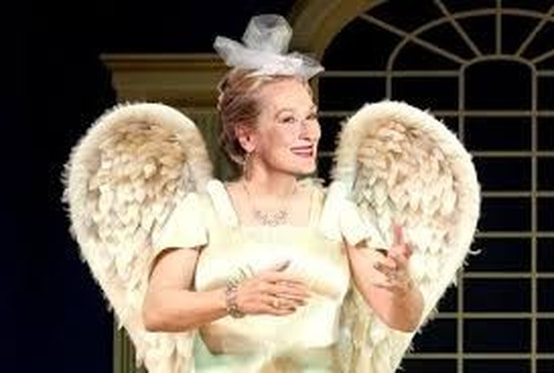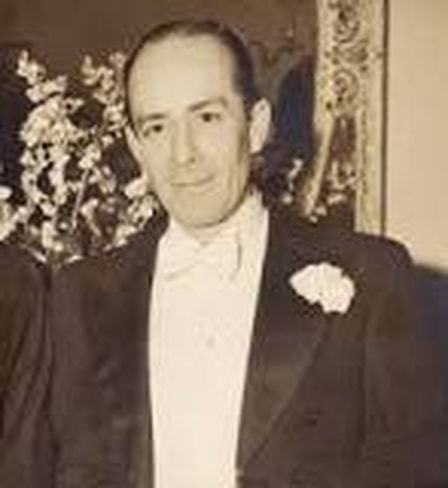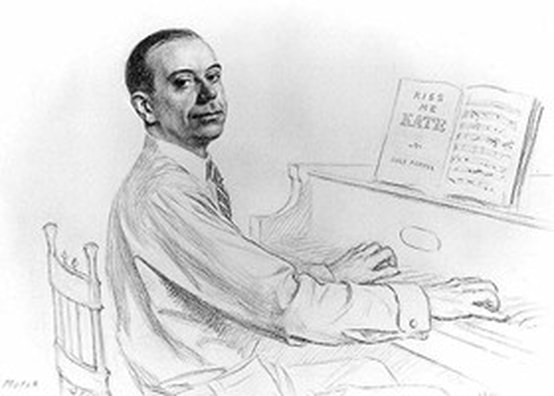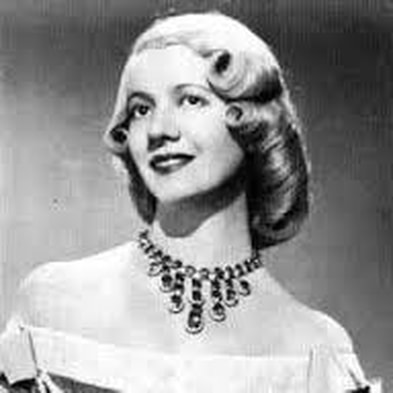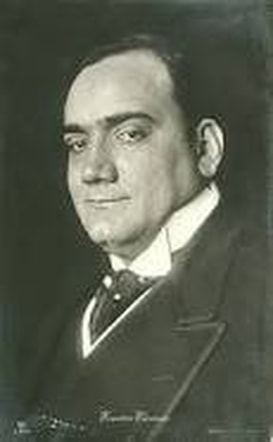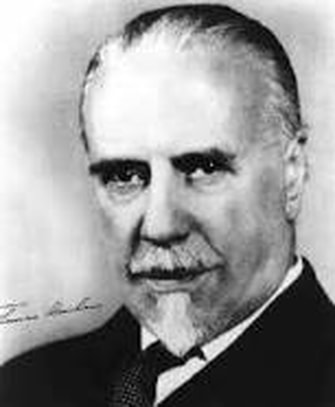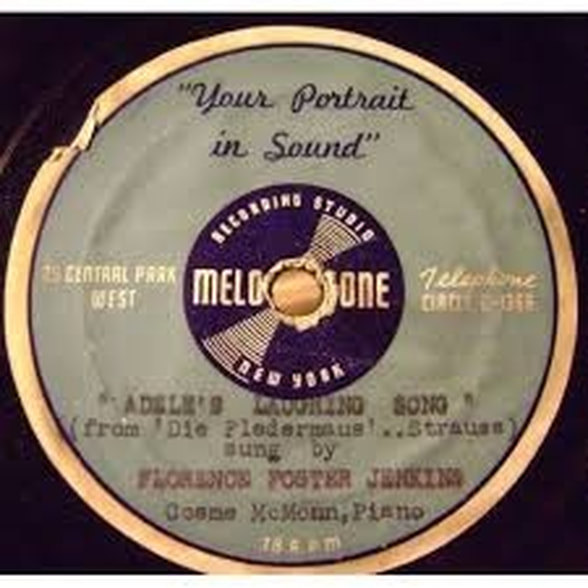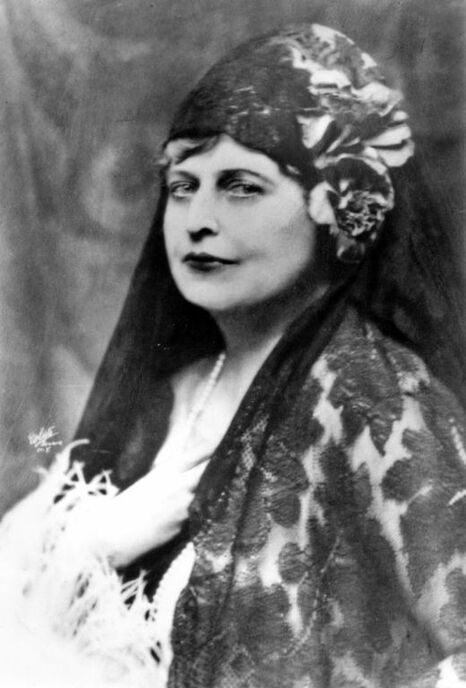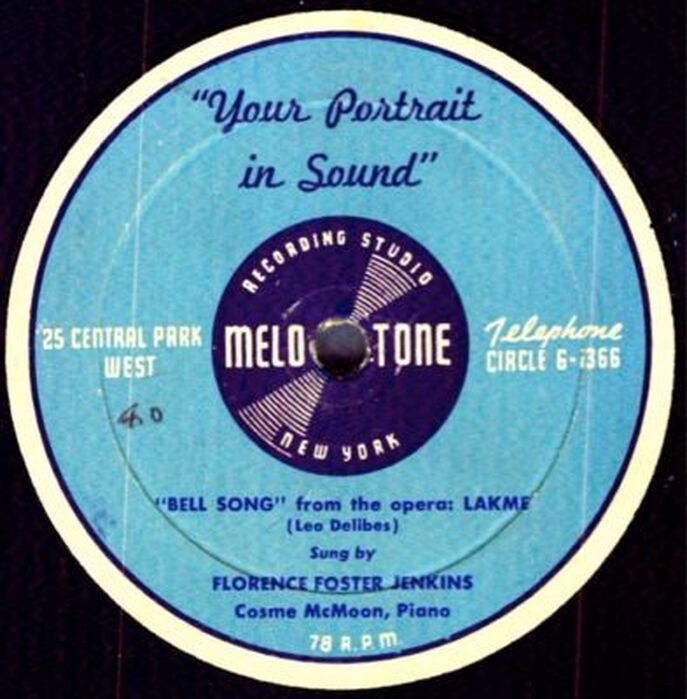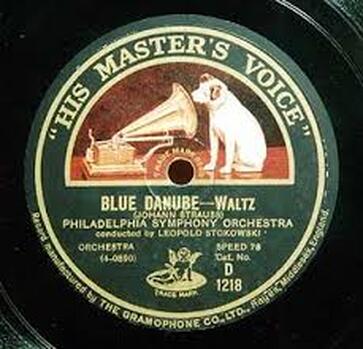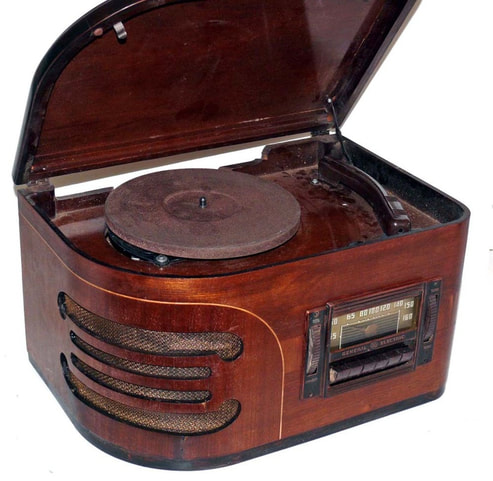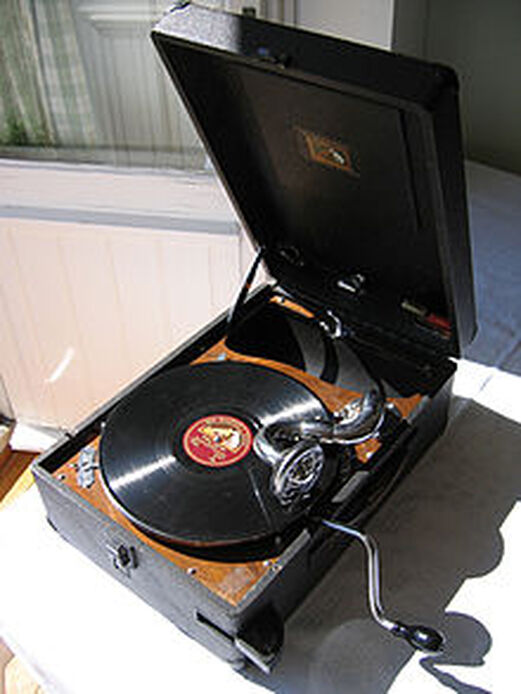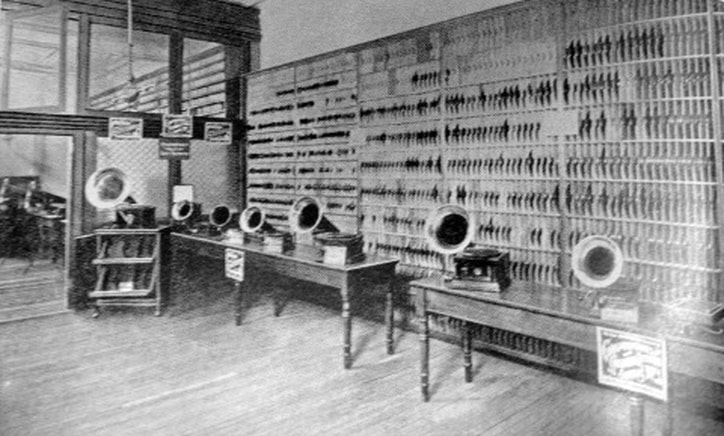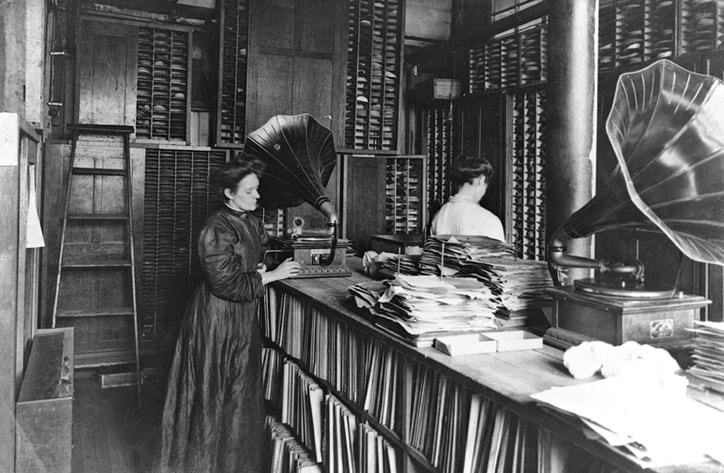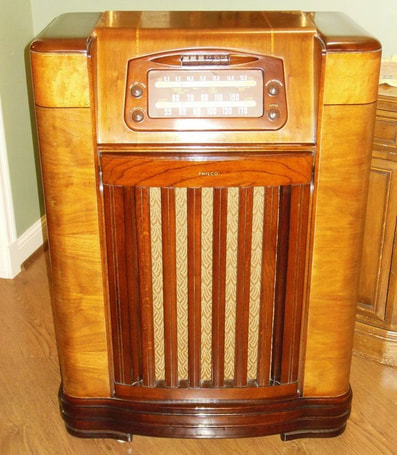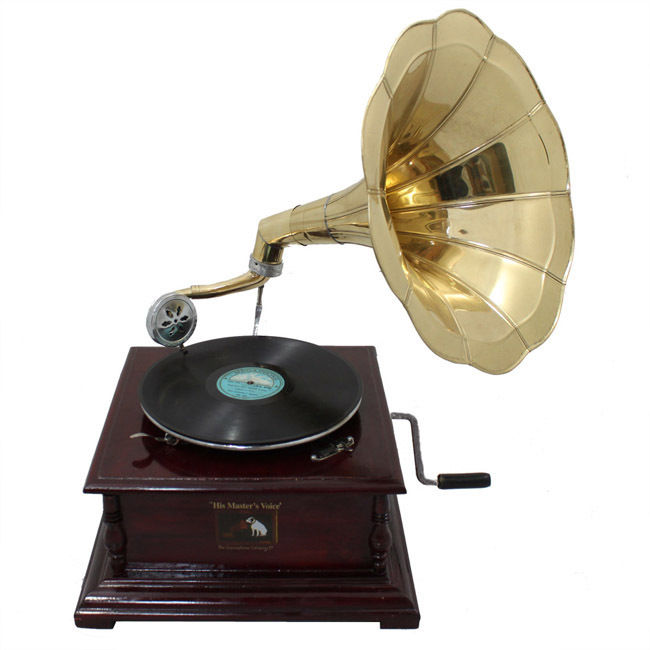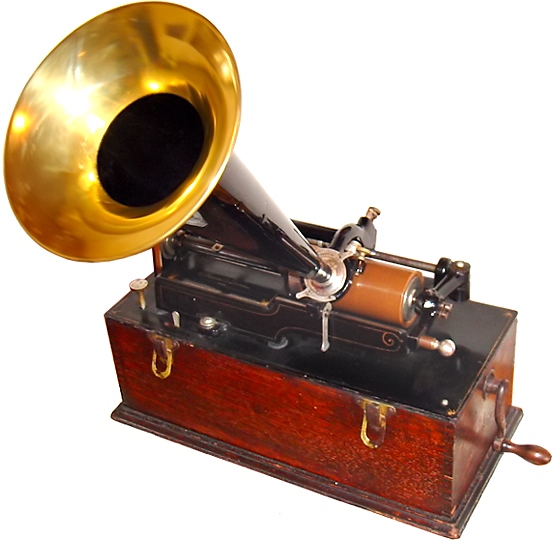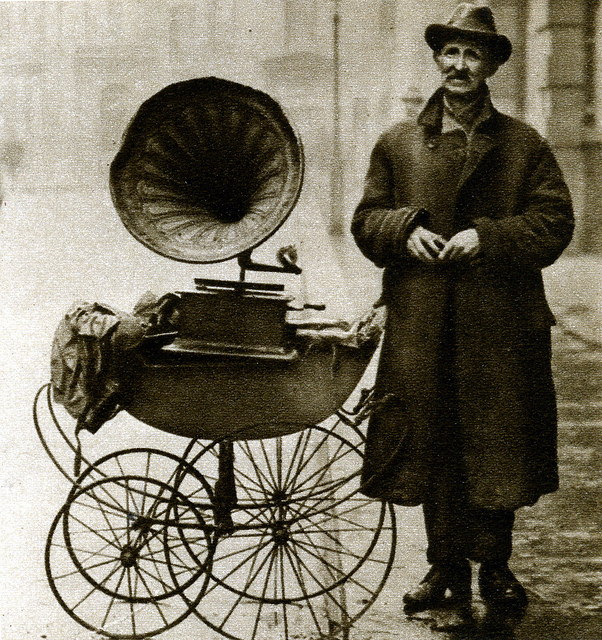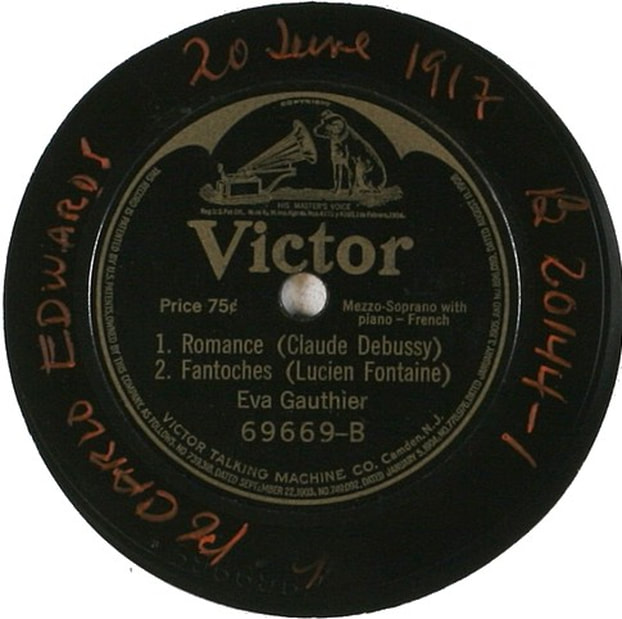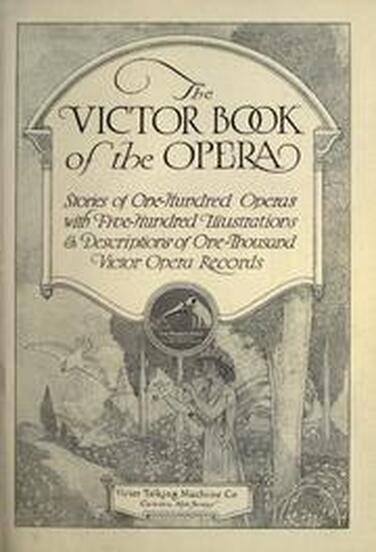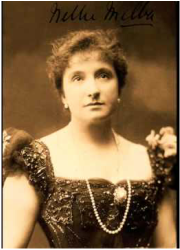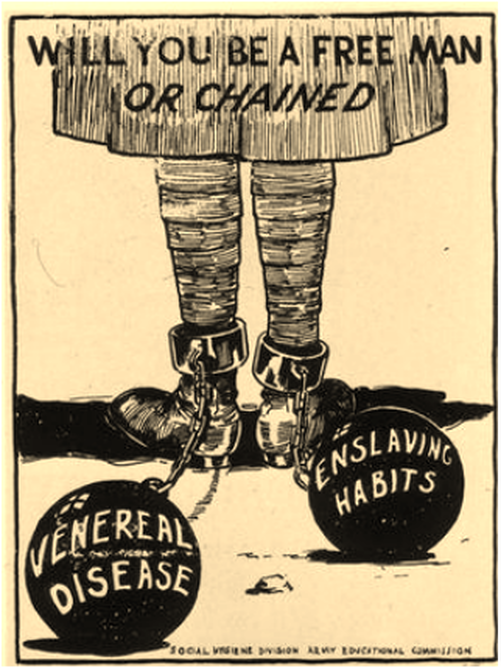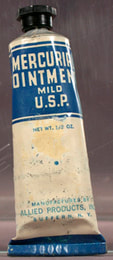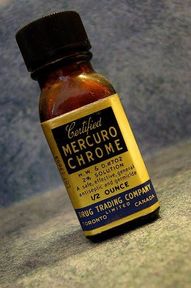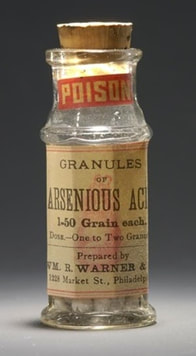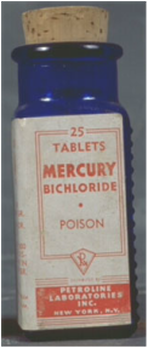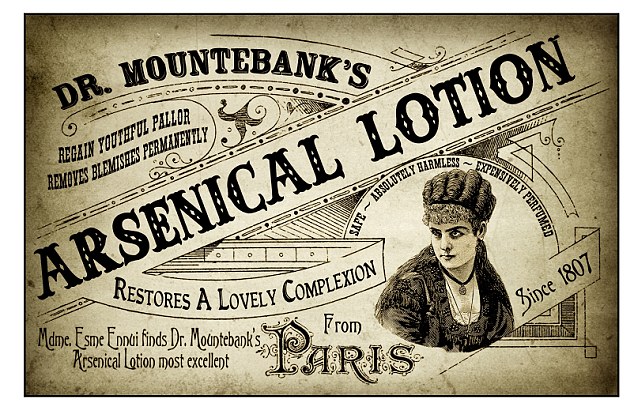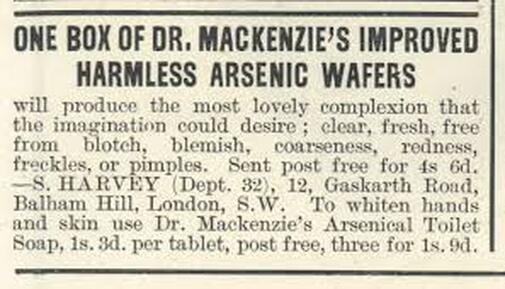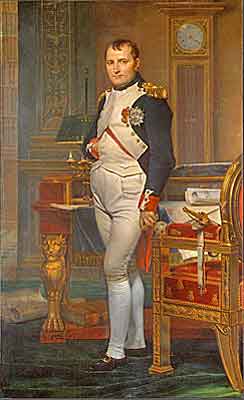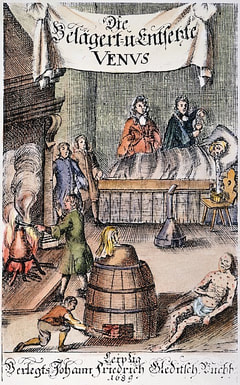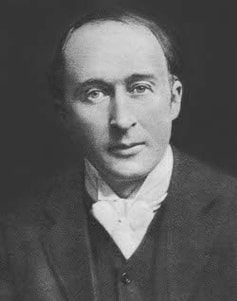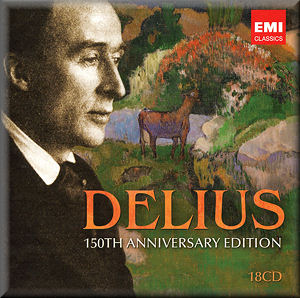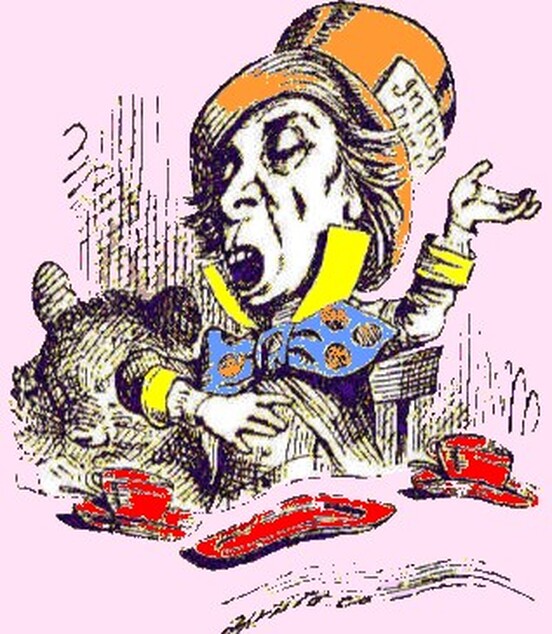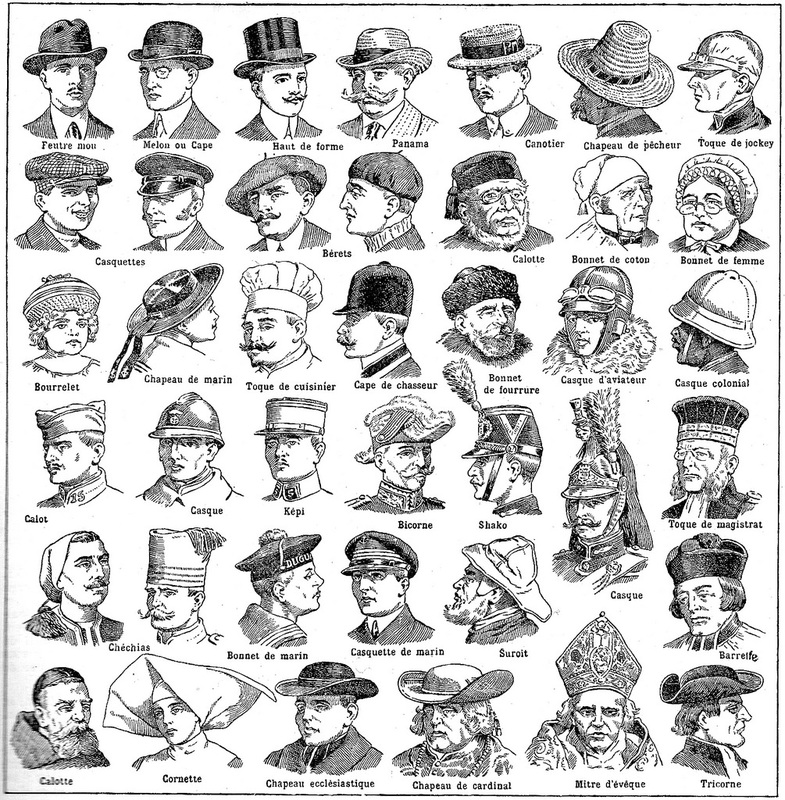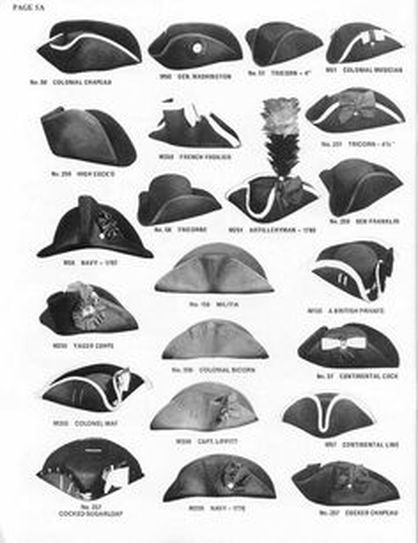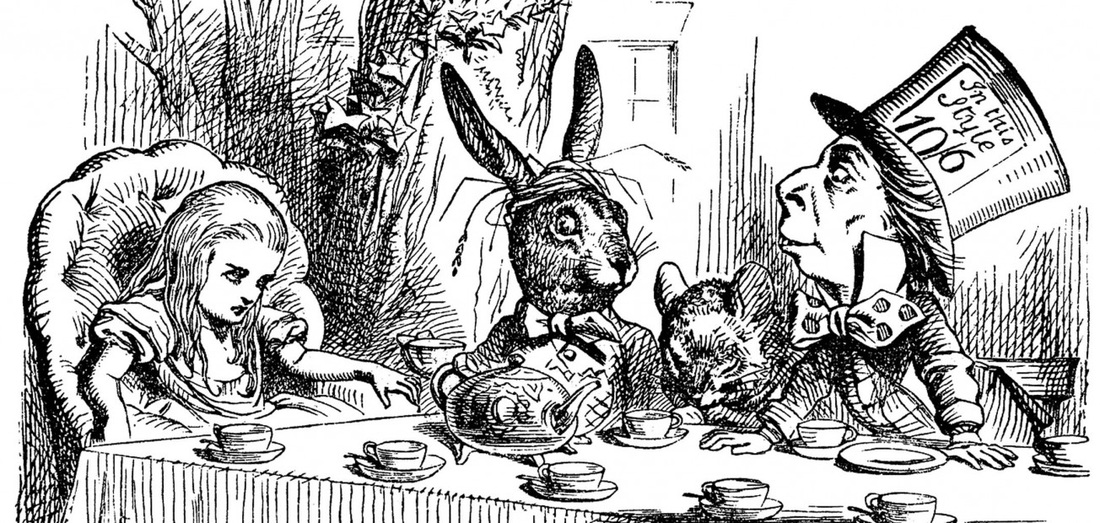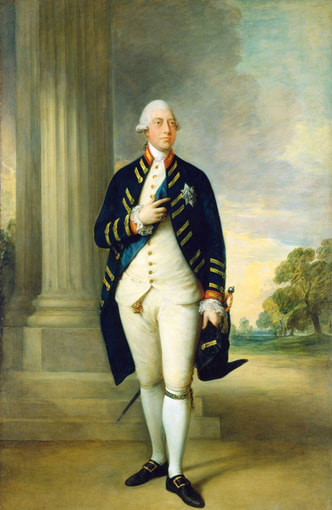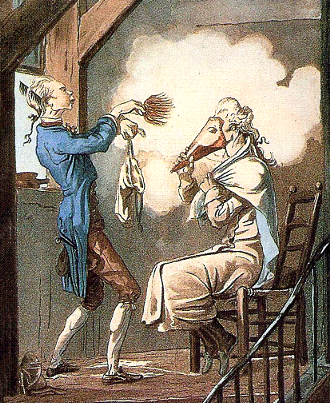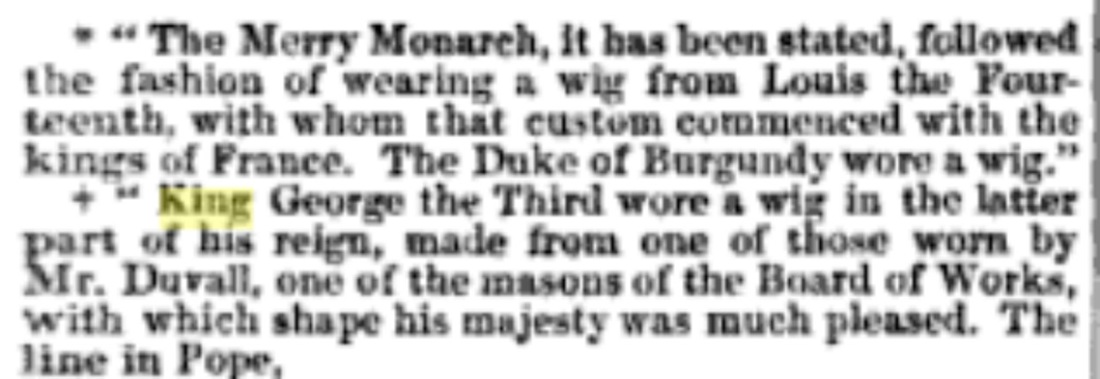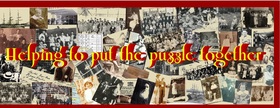|
*Please note- This site search does not include the Vic. & Tas. BMD's, Lots o' Links & Worth a Look Books
|
FLORENCe FOSTER JENKINS
(QUIRKY OPERA SINGER)
1868-1944
I had heard of Florence Foster Jenkins long before the recent film release with Merryl Streep playing the part of Florence. My friends & associates had often spoken of her somewhat 'unusual talent', so I developed an interest in finding out about her career.
Narcissa Florence Foster was born in Wilkes-Barre, Pennsylvania, on July 19, 1868, to Charles Dorrance Foster (a Wilkes-Barre banker & lawyer) and Mary Jane Hoagland. As was customary during the Victorian era, Narcissa (Florence) received music lessons as a child & was said to be quite gifted. She was introduced to Society, with her first piano recital at 8 years of age, in Pennsylvania.
At 17, she expressed a desire to go abroad to study opera, but her wealthy father refused to fund Florence's dream, so she eloped to Philadelphia instead & married physician, Frank Thornton Jenkins. They married in 1885, but ended with a sour divorce in 1902. After her divorce, Florence (now back to Jenkins), being almost destitute, earned a living in Philadelphia as a music teacher and often performed as a pianist at society luncheons. She supported herself for 6 years until meeting a stage actor named St. Clair Bayfield & in 1908 they began living together. Bayfield later became her manager and this relationship would last the rest of her life. The following year in 1909, her father died & he had left Florence a considerable sum, enough for her to finance her life long dream of a singing career. She took voice lessons from a maestro with the Metropolitan Opera named Carlo Edwards and became involved in the musical social circles of Philadelphia, then on to New York City, where she founded and funded the Verdi Club.
Although Jenkins was said to be quite talented as a pianist, her singing ability left a lot to be desired, but she obviously had enough faith in her own talent & also being supported by Bayfield, that she began funding her own recitals in 1912, as well as becoming chairperson of the Euterpe Club's tableaux vivants. This was to be the beginning of her 'bizarre' career as an Opera singer.
Her mother died in 1928 giving her extra resources to pursue her dream, also that same year, she hired pianist Edwin McArthur. They worked together in concert for six years until he was fired for laughing during a performance. Jenkins hired Cosme McMoon, a talented pianist and composer, who would continue to play for her until her death, as he could keep a straight face. To add to the eccentricities of her voice, Jenkins performed in costume, wearing such clothing as a shepherdess outfit, a 19th century hoopskirt & her favourite, a long silvery gown complete with a pair of very large wings. She would make her way through
potted palms to the curve of the grand piano, to tackle pieces like, 'Vissi d'arte' (Tosca), 'Mein herr, Marquis' (Adele's Laughing Song) and Lakmé's 'Bell song'. Her signature number however, was Mozart's 'Der Hölle Rache' or 'The Queen of the Night' aria and as the winged inspiration of a great American composer when re-enacting Howard Chandler Christy's painting 'Stephen Foster and the Angel of Inspiration'.
Audiences found it almost impossible to keep composure. Most would stuff handkerchiefs into their mouths or cough quietly as she sang. Upon finishing, the audience would let loose with a roar of applause, finally being able to laugh. The audience would cheer for an encore & her favourite choice was 'Clavelitos'. Quickly changing backstage, she would emerge as a Spanish señorita, with a shawl covering her shoulders & carnations in her hair. During the piece she would throw roses at the audience (one time, even the basket as well) & afterward McMoon would gather them up, ready to be tossed again at the next performance.
Jenkins was a very charitable person with most of her father's fortune still left, she gave the majority of her concert earnings to young artists, or those in need.
Later in her career, she went to Melotone Recording Studios in Manhattan to record her voice, intending to sell the record to her friends for $2.50 per copy. Following her recording session, Jenkins called the studio feeling worried about a note at the end of her recording, but the director of the studio told her that "she need not feel any anxiety about any single note". She told a Melotone executive that she had listened to a certain aria from "The Magic Flute" as recorded by famed prima donnas Hempel & Tetrazzini and that her own rendition was "beyond doubt the most outstanding of the three.
Florence had a faithful following who were continually urging her to sing at Carnegie Hall. At first, she refused, but at 76 years of age & with the money to hire out the hall for herself, she sang at what must have been the highlight of her career 'Carnegie Hall'. With the concert being booked out in only two hours of ticket release, on Oct. 25th 1944, the concert took place, with 2,000 disappointed fans turned away. As Florence sang, the audience was not as kind as in smaller venues & laughed openly. Critics were invited to her concert & reviews were scathing & she was to become known as 'The Diva of din', as well as "the first lady of the sliding scale". Some were tactful, Robert Bager of the New York World Telegram observed: "She was exceedingly happy in her work. It is a pity so few artists are & her happiness was communicated
as if by magic to her listeners . . . who were stimulated to the point of audible cheering, even joyous laughter and ecstasy by the inimitable singing." The applause was enjoyably real.
Her Carnegie Hall performance, was to be her last, as a few weeks later, Florence suffered a heart attack from which she never recovered. Some said that it was a broken heart, from the terrible reviews, which caused the attack, but her true friends knew better. Close friend Francis Robinson, claimed she died with a "happy heart," on November 26, 1944, also dying with her dear St. Clair Bayfield by her side in their Manhattan apartment.
Florence Forster Jenkins may not have been able to correctly interpret the notes that she was singing, but there was no doubt that she was a real star, with a bit of glitz & glamour & a true love for what she did. She was a woman of many talents, including great organisational skills & a big heart, unfortunately, singing was not one of them.
Florence reminds me of a friend who died about 2 years ago. This friend just loved music with a passion &
was so dedicated to improving herself, that she would put most of us to shame. We'd painfully listen to her perform, hoping she might get it right this time? All encouraging her, because she truly believed in & enjoyed what she was doing, so how could you not cheer her on? It made others happy, just to see her happy. I would imagine that Florence Foster Jenkins' close followers felt the same way?. She had the courage & faith in herself to achieve her dream and how many of us could say that? I just wish that I would have had the same courage & belief in myself & my own career.
I'm sure that both Florence & my friend, are singing beautifully together with real 'pure & radiant tones' as members of the grand choir in Heaven!
Reference
Maxbass.com & Kathleen Bayfield's notes
Narcissa Florence Foster was born in Wilkes-Barre, Pennsylvania, on July 19, 1868, to Charles Dorrance Foster (a Wilkes-Barre banker & lawyer) and Mary Jane Hoagland. As was customary during the Victorian era, Narcissa (Florence) received music lessons as a child & was said to be quite gifted. She was introduced to Society, with her first piano recital at 8 years of age, in Pennsylvania.
At 17, she expressed a desire to go abroad to study opera, but her wealthy father refused to fund Florence's dream, so she eloped to Philadelphia instead & married physician, Frank Thornton Jenkins. They married in 1885, but ended with a sour divorce in 1902. After her divorce, Florence (now back to Jenkins), being almost destitute, earned a living in Philadelphia as a music teacher and often performed as a pianist at society luncheons. She supported herself for 6 years until meeting a stage actor named St. Clair Bayfield & in 1908 they began living together. Bayfield later became her manager and this relationship would last the rest of her life. The following year in 1909, her father died & he had left Florence a considerable sum, enough for her to finance her life long dream of a singing career. She took voice lessons from a maestro with the Metropolitan Opera named Carlo Edwards and became involved in the musical social circles of Philadelphia, then on to New York City, where she founded and funded the Verdi Club.
Although Jenkins was said to be quite talented as a pianist, her singing ability left a lot to be desired, but she obviously had enough faith in her own talent & also being supported by Bayfield, that she began funding her own recitals in 1912, as well as becoming chairperson of the Euterpe Club's tableaux vivants. This was to be the beginning of her 'bizarre' career as an Opera singer.
Her mother died in 1928 giving her extra resources to pursue her dream, also that same year, she hired pianist Edwin McArthur. They worked together in concert for six years until he was fired for laughing during a performance. Jenkins hired Cosme McMoon, a talented pianist and composer, who would continue to play for her until her death, as he could keep a straight face. To add to the eccentricities of her voice, Jenkins performed in costume, wearing such clothing as a shepherdess outfit, a 19th century hoopskirt & her favourite, a long silvery gown complete with a pair of very large wings. She would make her way through
potted palms to the curve of the grand piano, to tackle pieces like, 'Vissi d'arte' (Tosca), 'Mein herr, Marquis' (Adele's Laughing Song) and Lakmé's 'Bell song'. Her signature number however, was Mozart's 'Der Hölle Rache' or 'The Queen of the Night' aria and as the winged inspiration of a great American composer when re-enacting Howard Chandler Christy's painting 'Stephen Foster and the Angel of Inspiration'.
Audiences found it almost impossible to keep composure. Most would stuff handkerchiefs into their mouths or cough quietly as she sang. Upon finishing, the audience would let loose with a roar of applause, finally being able to laugh. The audience would cheer for an encore & her favourite choice was 'Clavelitos'. Quickly changing backstage, she would emerge as a Spanish señorita, with a shawl covering her shoulders & carnations in her hair. During the piece she would throw roses at the audience (one time, even the basket as well) & afterward McMoon would gather them up, ready to be tossed again at the next performance.
Jenkins was a very charitable person with most of her father's fortune still left, she gave the majority of her concert earnings to young artists, or those in need.
Later in her career, she went to Melotone Recording Studios in Manhattan to record her voice, intending to sell the record to her friends for $2.50 per copy. Following her recording session, Jenkins called the studio feeling worried about a note at the end of her recording, but the director of the studio told her that "she need not feel any anxiety about any single note". She told a Melotone executive that she had listened to a certain aria from "The Magic Flute" as recorded by famed prima donnas Hempel & Tetrazzini and that her own rendition was "beyond doubt the most outstanding of the three.
Florence had a faithful following who were continually urging her to sing at Carnegie Hall. At first, she refused, but at 76 years of age & with the money to hire out the hall for herself, she sang at what must have been the highlight of her career 'Carnegie Hall'. With the concert being booked out in only two hours of ticket release, on Oct. 25th 1944, the concert took place, with 2,000 disappointed fans turned away. As Florence sang, the audience was not as kind as in smaller venues & laughed openly. Critics were invited to her concert & reviews were scathing & she was to become known as 'The Diva of din', as well as "the first lady of the sliding scale". Some were tactful, Robert Bager of the New York World Telegram observed: "She was exceedingly happy in her work. It is a pity so few artists are & her happiness was communicated
as if by magic to her listeners . . . who were stimulated to the point of audible cheering, even joyous laughter and ecstasy by the inimitable singing." The applause was enjoyably real.
Her Carnegie Hall performance, was to be her last, as a few weeks later, Florence suffered a heart attack from which she never recovered. Some said that it was a broken heart, from the terrible reviews, which caused the attack, but her true friends knew better. Close friend Francis Robinson, claimed she died with a "happy heart," on November 26, 1944, also dying with her dear St. Clair Bayfield by her side in their Manhattan apartment.
Florence Forster Jenkins may not have been able to correctly interpret the notes that she was singing, but there was no doubt that she was a real star, with a bit of glitz & glamour & a true love for what she did. She was a woman of many talents, including great organisational skills & a big heart, unfortunately, singing was not one of them.
Florence reminds me of a friend who died about 2 years ago. This friend just loved music with a passion &
was so dedicated to improving herself, that she would put most of us to shame. We'd painfully listen to her perform, hoping she might get it right this time? All encouraging her, because she truly believed in & enjoyed what she was doing, so how could you not cheer her on? It made others happy, just to see her happy. I would imagine that Florence Foster Jenkins' close followers felt the same way?. She had the courage & faith in herself to achieve her dream and how many of us could say that? I just wish that I would have had the same courage & belief in myself & my own career.
I'm sure that both Florence & my friend, are singing beautifully together with real 'pure & radiant tones' as members of the grand choir in Heaven!
Reference
Maxbass.com & Kathleen Bayfield's notes
| kathleen_bayfield_reads_from_her_memoirs.doc | |
| File Size: | 126 kb |
| File Type: | doc |
Venues
Carnegie Hall was erected in 1891 & named after Scottish born, Andrew Carnegie. He also built Pittsburgh's Carnegie Steel Company, selling it in 1901 for $480 million. We all know the old joke of someone asking for directions?- "How do you get to Carnegie hall?" with the reply of- "Practice!" (or money it seems?)
The Carnegie Hall Story
http://www.carnegiehall.org/History/The-Carnegie-Hall-Story/
The Carnegie Hall Story
http://www.carnegiehall.org/History/The-Carnegie-Hall-Story/
|
The Tickets were sold out weeks in advance & grossed approx. $6,000 in 1944, around $81,000 today http://www.dollartimes.com/inflat From Rachmaninoff in 1909, to The Beatles in 1964, Carnegie Hall remembers all of the performers, but Jenkins was the one act, that they chose to forget http://www.carnegiehall.org/Blog Jenkins was a skilled organiser and fund-raiser, she was quite genuinely loved by her many friends in New York society, who found her modest in all things except her musical delusions At the conclusion of a concert, "flushed and happy, surrounded with flowers," she often delivered a little speech, asking the patrons, what they enjoyed the most After a taxicab crash in 1943 she found she could sing "a higher F than ever before." Instead of a lawsuit against the taxicab co., she sent the driver a box of expensive cigars Jenkins certainly had an excellent repertoire and occasionally she actually did hit the right note! She became a celebrity then a legend
|
Carnegie, Victoria
Carnegie, was Originally called Rosstown, after William Murray Ross, a property developer & entrepreneur, then became Carnegie in 1901.
http://www.victorianplaces.com
Carnegie, was Originally called Rosstown, after William Murray Ross, a property developer & entrepreneur, then became Carnegie in 1901.
http://www.victorianplaces.com
The Argus 24 April 1909
|
Euterpe Club
|
Euterpe Club's tableaux vivants tableaux vivant- Is a silent and motionless group of people arranged to represent a scene or incident. It was also said that in every group of tableaux-vivants that she produced for the clubs, she would always be the main character in the final tableau of the group |
Club Women of New York 1904
https://archive.org/stream/clubwomennewyor00conggoog#page/n234/mode/2up/search/Euterpe
https://archive.org/stream/clubwomennewyor00conggoog#page/n234/mode/2up/search/Euterpe
Jenkins often held Recitals in her own home in New York, which were by invitation only. The home was adorned with numerous photographs of people that she had associated with in her life.
The Verdi club
An Annual function at the Verdi Club in 1918
|
The Club was named in honour of The Italian Composer- Giuseppe Verdi. Speaking of the new club that she wanted to start, Jenkins was asked what this club would be called? so on the spur of the moment she said "The Verdi Club", as that was the name that sprung to mind after she had been earlier, singing something from one of his Operas.
|
Verdi was one of the few composers whose genius was recognised while he was alive. Verdi's reputation as the greatest of all Italian opera composers is beyond dispute.
http://www.classicfm |
“People may say I can’t sing, but no one can ever say
I didn’t sing”
I didn’t sing”
|
|
|
|
Florence Foster Jenkins "The Verdi Club"
2:32 |
Giuseppe Verdi - Aida - Grand Triumphal March
6:13 |
Opera & Opera Houses
Metropolitan Opera
The Metropolitan Opera got its start after a group of New York City millionaires wanting good seats for the latest theatre & performing arts, decided to build their own opera house in New York City.
http://entertainment.howstuffworks.com/arts/theater/metropolitan-opera2.htm
The Metropolitan Opera got its start after a group of New York City millionaires wanting good seats for the latest theatre & performing arts, decided to build their own opera house in New York City.
http://entertainment.howstuffworks.com/arts/theater/metropolitan-opera2.htm
|
In 1880, dissatisfied with the location and seating capacity of the 1854 Academy of Music opera house near Union Square, a group of wealthy businessmen opted to build their own. In all, 70 shareholders provided the $1.7 million required to buy the land and build the opera house at West 39th Street and Broadway. Occupying the entire western side of the block between West 39th Street and West 40th Street
http://www.nypap.org/preservation-history/old-met Within three years, singers & an orchestra had been hired, sets were built, costumes were designed and the general management and building designers had been hired. On October 22, 1883, the opening night performance was Gounod's 'Faust', an Italian opera performed by an entirely Italian opera company, with the exception of two Americans.
|
The Academy of Music was a New York City opera house, located on the northeast corner of East 14th Street and Irving Place in Manhattan. The 4,000-seat hall opened on October 2, 1854.
The theatre was gutted by fire in August 1892, rebuilt over the next two years then finally demolished in January 1967 |
|
The theatre was gutted by fire in August 1892, but was rebuilt over the next two years along its original lines. In the early 1900's, the opera house underwent another series of transformations. The theatre came under threat of demolition in 1938, but $1 million in gifts from the public saved the house. The “Old” Metropolitan Opera House (as it is referred to as now) was demolished in January 1967. http://www.nypap.org/preservation-history/old-met |
A Brief Outline of the History of Stage Lighting
http://www3.northern.edu/wild/LiteDes/ldhist.htm
http://www3.northern.edu/wild/LiteDes/ldhist.htm
Almost from the beginning, it was clear that the opera house on 39th Street did not have adequate stage facilities. But it was not until the Met joined with other New York institutions in forming Lincoln Center for the Performing Arts that a new home became possible. The new Metropolitan Opera House, which opened at Lincoln Center in September of 1966, was equipped with the finest technical facilities. http://www.metopera.org/About/The-Met/
|
Royal Opera House Covent Garden (London)
The Royal Opera was formed as the Covent Garden Opera Company in 1946, but behind it lies a tradition of operatic performance which goes back for more than 260 years at its home in Covent Garden. In each of the three theatres there have been on the site since 1732, opera has played an important role. Left- Bow Street entrance |
The original Covent Garden theatre was opened by John Rich in 1732; the Theatre was destroyed by fire in 1808, reopening the following year. It burned down again in 1856; the present building designed by E. M. Barry opened in 1858.
http://www.encyclopedia.com/topic/Royal_Opera_H
http://www.encyclopedia.com/topic/Royal_Opera_H
|
An illustration of the first theatre drawn shortly before it burned down in 1808.
First Opera House in Cork, Ireland In 1852, following the Cork Exhibition, the citizens of Cork decided to build a venue suitable for the holding of public lectures, meetings and concerts. The site chosen was the site of the present Opera House adjacent to the Royal Cork Institution, now the Crawford Municipal Art Gallery.
http://www.corkpastandpresent.ie/places/stpatrickss Glasgow, Scotland The Theatre Royal is the oldest theatre in Glasgow and longest-running theatre in Scotland. The theatre originally opened in 1867 as the Royal Colosseum & Opera House, changing its name to the Theatre Royal in 1869. Today the theatre is the performance home of Scottish Opera and Scottish Ballet. List of Opera Houses
https://en.wikipedia.org/wiki/List_of_opera_houses |
The first public opera house came into existence in 1637, Venice, Italy
The Teatro San Cassiano in Venice, Italy
Cork Opera House now
Belfast Opera House, Ireland
|
Beauty and Grandeur of Opera Houses
|
Palais Garnier, Paris, France
http://www.mymodernmet.com/profiles/blogs/beaut Sydney Opera House, N.S.W., Australia
|
Palacio de Bellas Artes in Mexico City
Has a stage curtain that is a stained glass foldable panel created from almost a million pieces of coloured glass by Tiffany's of N.Y. It is the only one of its kind and weighs 24 tons. |
|
21 Beautiful Old Buildings that no longer exist Left- The Crystal Palace in London's Hyde Park http://www.businessinsider.sg/demolished-buildings-around |
|
The First Melbourne Opera House, Bourke St. East
After the Old Opera House was demolished in 1900, due to board of Health issues, a new one was built, which later became the 'Tivoli' in 1914. Eventually being used as a movie theatre before it was destroyed by fire in 1967. The 'Tivoli Arcade' is on the site today
|
Melbourne Once had an Opera House Originally on the land, was Punch's Timber yard, then Henry Hoyt had his Omnibus company on part of the land and built a hall over the top of the Livery Stables. The hall was built to display carriages, but ended up being a Varieties hall, which burned down in 1870. Henry built the Prince of Wales Hotel on the same spot, then later in 1872, The 'Prince of Wales Opera house', dropping the 'Prince of Wales' after a while and being known as The 'Melbourne Opera House' (Sydney already had a Prince of Wales Opera house as well). The place for Entertainment was in Bourke Street East. Other theatres had burned down at the time the Opera House was built, so it was a great asset to the city.
|
Roots
A graduate of The Philadelphia Musical Academy, Heyl Dramatic School and Mme. Kutz's School of Philadelphia, she also studied at the Moravian Seminary, Bethlehem, Pennsylvania, the Virgil Conservatory in New York and others.
|
As well as directing the destinies of the Euterpe Club, Florence F. Jenkins was a director of the New Yorker's Club, Vice President of the National Roundtable, Historian of the National Opera Club, for two years Chairman of Music, National Roundtable, seven years Chairman of Music Euterpe, six years choral member of Mozart Society, and has been the Chairman of Music of various entertainments for Twilight, Eastern Star and New Yorker's Clubs, of which, she was an active and leading member. |
While learning the Piano as a child
Florence fell in love with music
and even showed signs of becoming a child prodigy
Florence fell in love with music
and even showed signs of becoming a child prodigy
|
Wilkes-Barre, Pennsylvania In the late 1800's and early 1900's, hundreds of thousands of immigrants flocked to work the anthracite coal The success of coal brought a steady stream of entrepreneurs http://www.wilkes-barre.pa.us/wbpro.php List of mayors of Wilkes-Barre, Pennsylvania
https://en.wikipedia.org/wiki/List_of_mayo |
|
WILKES-BARRE, PA. ANCESTRY & FAMILY HISTORY http://freepages.genealogy.rootsweb.ancestry.com/~nepaphotos/Feb/ http://www.epodunk.com/cgi-bin/genealogyInfo.php?locIndex=15102 |
|
Do You Connect? Florence Foster Jenkins' immediate ancestors came from, around Pennsylvania, U.S.A., but further back, they have been identified to come from England, Norway & Netherlands.
Andrews, Bailey, Bates (Lincolnshire), Batt (Wiltshire), Baudouin, Bergen (Norway), Blacksoll (Suffolk), Bodwell, Bulford, Carman, Clark, Colburn, Cole, Cox/Coy, De Clerck, Dunington (Leicestershire), Duxford, Emery (Hampshire), Fairbanks, Fisher, Fletcher (Nottingham), Foster, Giddings, Gyddyns, Hall, Hamlin, Hansen, Hartwell, Hitchcock, Hoagland (Netherlands), James, Jensen (Valenciennes), Jewett (Yorkshire), Johnson, Jordan, Kemp, Keyes, Knowlton, Langton, Lawrence, Lee, Lewis, Mallinson, Merrill (Suffolk), Merriman, Nash(Holland), Ninian, Parker (Essex), Pierce, Purrier/Puryear, Rapalje (New Netherland, New Amsterdam), Rapariellet, Reyerse, Richardson (Hertfordshire), Sauvagie, Shatswell, Stone, Strong, Titus, Trico (Valenciennes), Underwood, Van Kirk, Varnum, Webster, Wheeler, Williams. http://www.wargs.com/other/jenkins.html |
WeRelate.org- Submit your Brick Walls
http://www.werelate.org/wiki/Brick_Walls
http://www.werelate.org/wiki/Brick_Walls
|
Norway
How to trace your ancestors in Norway http://digitalarkivet.uib.no/sab/howto.html Digital Archives and the Digital Inn. http://www.arkivverket.no/eng/Digitalarkivet Norwegian Genealogy Sources http://www.borgos.nndata.no/SOURCES.HTM |
|
Holland
Dutch genealogy sources available on the internet http://www.traceyourdutchroots.com/roots/online.html FREE Dutch Genealogy Searches http://www.searchforancestors.com/locality/netherlands.html Netherlands Genealogy http://www.genealogylinks.net/europe/netherlands/ |
|
The French Genealogy Blog: Vital Records Old and New http://french-genealogy.typepad.com/genealogie/vital Valenciennes is a commune in the Nord department in northern France. It lies on the Scheldt river. http://www.werelate.org/wiki/Place:Valenciennes,_Nor |
|
Originally the Hollenback Family Cemetery
Matthias Hollenback 1752-1829 MATTHIAS HOLLENBACK'S family emigrated from Edelfingen, Wurtemberg, Germany in 1717, to Pennsylvania, U.S.A. http://freepages.genealogy.rootsweb.ancestry.com/~matthiashollenback/biog |
|
Charles J. Fourie
http://www.gutenberg.us/articles/ |
In 1999 'Goddess of Song' a one-woman play about Jenkins, by South African playwright Charles J. Fourie, was staged at the Coffee Lounge in Cape Town. In 2001 Viva La Diva by Chris Ballance, had a run at the Edinburgh Fringe. http://www.anb.org/articles/18/18 |
Chris Ballance
https://en.wikipedia.org/wiki/Chri |
|
In "Angel of Inspiration" Florence is a very matronly apparition.
|
A few plays have been written about Jenkins' life. One of them-'Souvenir', written by Stephen Temperley, opened in New York off-Broadway and won several awards. The play's title is thought to come from the "souvenir" of her first marriage, a case of syphilis. The play is currently being made into a film, due for release in 2016, starring Meryll Streep as Jenkins & Hugh Grant as St. Clair Bayfield.
Stephen Temperley http://www.doollee.com/PlaywrightsT/temperley-stephen.html |
Associates
She often performed with the
Pascarella Chamber Music Society
Pascarella Chamber Music Society
|
Caesar A. Pacarella was a renowned cellist and classical music instructor born in Naples, Italy. He began his education in music as a child under the tutelage of his father, Ignazio Pascarella, a famed violinist &
professor at the Royal Conservatory of Music in Naples. In 1921, he traveled with his family to the United States, settling in New York. |
Pascarella and his brothers Carl (piano) & Enzo (violin) formed the Pascarella Trio in 1926 and performed throughout the United States, Europe and on radio broadcasts across the country until 1940. After abandoning the Trio, they had not played together until a reunion in October 1943, when Cosme McMoon was involved & they became the Pascarella Chamber Ensemble. Carl Pascarella was killed in an automobile accident in San Diego, California, December 1943, so then the Ensemble, performed with Cosme McMoon at the piano. Another brother, Gabriel Pascarella is also a violinist, but was not part of the original Trio.
"Her attitude was at all times that of a singer
who performed her task to the best of her ability".
who performed her task to the best of her ability".
She had a superb faith in her destiny as a diva
producing as she said- "pure and radiant tones"
producing as she said- "pure and radiant tones"
Recordings
|
Melotone Recording Studio
Melotone Records was a United States based record label. In late 1930, Warner/Brunswick Records introduced the Melotone label to the U.S. and Canada as a budget subsidiary issuing 78 rpm disc records. It then became part of the American Record Corporation collection of labels in 1932. The label was disestablished in 1938. In 2010, Melotone Records was refounded as a division of Melotone Music LLC Artists whose recordings were issued on Melotone include Eddie Cantor, Annette Hanshaw, Gene Autry
Her recordings were avidly collected as humorous novelty items and quickly became collector's items Florence Foster Jenkins' recordings, were a novelty at first, but since her death, she has a cult following & the records have become somewhat of a collector's item. (Maybe one will pop up on Antique Roadshow?) |
Spanish shawl, with a jewelled comb
tossing tiny red flowers from her pretty basket
tossing tiny red flowers from her pretty basket
|
Jenkins' Recordings were 78rpm
Any flat disc record, made between about 1898 and the late 1950's and playing at a speed around 78 revolutions per minute is called a "78" by collectors. The materials of which discs were made and with which they were coated were also various; shellac eventually became the commonest material. Generally 78's were made of a brittle material which uses a shellac resin. During and after World War II when shellac supplies were extremely limited, some 78 rpm records were pressed in vinyl, instead of shellac (wax). The older 78 format continued to be mass produced alongside the newer formats into the 1950s, but had faded from the scene by 1955.
http://www.library.yale.edu/cataloging/music/historyof78rpms.htm |
If you had a brand new record player at the time that Jenkins' recordings were first available, they would be played on something like this from the 1940's-
|
Or maybe, a 1930's portable wind-up player? HMV Record Shop 1940's
http://www.voicesofeastanglia.com/2011/11/more-from Record Shop 1907
Around 1900
|
If you couldn't afford the latest? then it would be a wind-up Gramophone like this one below- Before that, a recording was on a cylinder Gramophone Record
https://en.wikipedia.org/wiki/Gramophone_reco |
The Library of Congress presents the 'National Jukebox'
|
Something that may interest some of you?, the Library of Congress, has developed a 'National Jukebox', where you can listen to a large variety of old recordings. As a starter, listen to Eva Gauthier & accompanist Carlo Edwards (Jenkins' vocal coach) recorded June 20th 1917
http://www.loc.gov/jukebox/recordings/detail/id/5828 |
The site also includes an interactive 1919 edition of the Victrola Book of the Opera, describes over 110 Operas. The publication of The Victrola Book of the Opera's first edition of the book was 1912
http://www.loc.gov/jukebox/victor-book-of-the |
Some of Florence's Repertoire, performed by Well known Artists
|
|
|
|
LILY PONS- CHARMANT OISEAU perle du brasil
6:15 |
Andre Rieu- Clavelitos
2:59 |
|
Joan Sutherland sings TOSCA Vissi d'arte
3:37 The Real Florence Foster Jenkins-
Queen of the Night, Mozart 3:43 The Real Florence Foster Jenkins on Film
2:50 |
Adele's Laughing Song- Gruberova
4:40 Florence Foster Jenkins: A World Of Her Own
1:29:15 (Final scene) Meryl Streep's sensitive rendition of-
When I Have Sung My Songs to You 2:17 |
|
Dame Nellie Melba GBE (19 May 1861 – 23 February 1931), born Helen Porter Mitchell, was an Australian operatic soprano. She became one of the most famous singers of the late Victorian era and the early 20th century. She was the first Australian to achieve international recognition as a classical musician. She took the pseudonym "Melba" from Melbourne, her home town. (wiki)
Dame Nellie Melba honoured with a Google Doodle http://google-au.blogspot.com.au/2011/05/dame-nellie-melba |
|
Nellie Melba 1904
Mozart- Marriage of Figaro "Porgi, amor" 3:21 |
Nellie Melba- Film Footage, 'Del ciel clemente un riso', Farewell Speech, Covent Garden (1926)
3:36 |
Jenkins laughed all the way to the bank
Her Illness
Two reasons given for Jenkins' behaviour-
1) After she married Dr. Frank Thornton Jenkins, she contracted syphilis from him. This in itself would very
gradually wreak havoc on her central nervous system, the brain, auditory nerves, etc.
2) The treatment for syphilis at that time, was primarily Mercury, administered by inhaling the vapour, or as a
salve. After ca.1910, arsenic was also used as a treatment or used in combination with mercury.
Mercury & Arsenic are highly poisonous, so we can safely say, this treatment affected her in the same way the disease did. This would also explain the fact that she was absolutely bald, the disease & treatment destroying hair follicles. Florence Jenkins’ diagnosis of syphilis was revealed by Dr. Frank Jenkins' 2nd wife, Kathleen Bayfield, in her auto biography.
(From the documentary on Florence Foster Jenkins, by Donald Collup)
1) After she married Dr. Frank Thornton Jenkins, she contracted syphilis from him. This in itself would very
gradually wreak havoc on her central nervous system, the brain, auditory nerves, etc.
2) The treatment for syphilis at that time, was primarily Mercury, administered by inhaling the vapour, or as a
salve. After ca.1910, arsenic was also used as a treatment or used in combination with mercury.
Mercury & Arsenic are highly poisonous, so we can safely say, this treatment affected her in the same way the disease did. This would also explain the fact that she was absolutely bald, the disease & treatment destroying hair follicles. Florence Jenkins’ diagnosis of syphilis was revealed by Dr. Frank Jenkins' 2nd wife, Kathleen Bayfield, in her auto biography.
(From the documentary on Florence Foster Jenkins, by Donald Collup)
|
By 1500 syphilis had reached the Scandinavian countries, Britain, Hungary, Greece, Poland and Russia. It was a time of world exploration and Europeans took the disease to Calcutta in 1498, and by 1520 it had reached Africa, the near East, China, Japan and Oceania.
Historical Views of Disease and Epidemics
http://ocp.hul.harvard.edu/contagion/tim Meryl Streep, Hugh Grant and Simon Helberg on Florence Foster Jenkins: Reel Pieces 53:57
|
|
Sweat baths were also used as it was thought
induced salivation and sweating eliminated the syphilitic poisons
induced salivation and sweating eliminated the syphilitic poisons
|
Symptoms of Metal Toxicity:
|
|
In 1943 penicillin was introduced as a
treatment for syphilis, many patients died of mercury poisoning |
Maybe we all have a 'Touch' of Metal Toxicity, from our mercury based
dental fillings? |
For centuries, mercury was an essential part of many different medicines, such as diuretics, antibacterial agents, antiseptics, and laxatives. In the late 18th century, anti-syphilitic agents contained mercury. A patient having the treatment was put in a hot, stuffy room & rubbed vigorously with mercury ointment several times a day. The massaging was done near a hot fire, so that the sufferer would sweat, this process could go on for months. Erratic & flamboyant behaviour were noted side effects caused by the mercury.
Not only Syphilis was treated with Arsenic-
|
Notable syphilis-infected people in history Napoleon Bonaparte (1769–1821), Emperor of France
Henry VIII (1491–1547), King of England Ivan the Terrible (1530–1584), Czar of Russia Vincent van Gogh (1853–1890), Painter Oscar Wilde (1854–1900), Writer Franz Schubert (1797–1828), Composer Adolf Hitler (1889–1945), Politician |
|
Frederick Theodore Albert Delius
1862 – 1934 English composer |
The Times newspaper reviewed the known facts about Delius's illness as documented by Professor Soothill. He suggested that Delius contracted syphilis in the l880s, was treated with arsenic & subsequently became blind with optic neuritis, eventually becoming totally paralysed. This was assumed to be a late neurological manifestation of syphilis. Case notes written by Sir John Conybeare, a distinguished British physician, had found no evidence of syphilis in his tests. He had also commented that there was no evidence of intellectual impairment which is another characteristic. It was further stated in The Times article that Sir John indicated that although he did not know the cause of Delius's death, he was sure it was not due to syphilis, but what damage did the arsenic treatment do? as he was visibly & physically unwell
Frederick Delius-
A musicologist is a man who can read music but can't play it |
|
In John Bridcut's new documentary about Frederick Delius, marking the 150th anniversary of his birth, reveals the degree to which the composer's chief champion Sir Thomas Beecham (also a friend of Florence Jenkins),
manipulated his reputation to make him appear more "British" than he really was. His interference went well beyond the call of duty. A year after Delius died, Beecham had his body disinterred from its French grave and reburied in a country churchyard in Surrey. http://www.independent.co.uk/arts-entertainment/tv/features/frederick-delius |
A very famous quote by Frederick Delius, well known among musicians
There are two golden rules for an orchestra:
Start together and finish together.
The public doesn't care what goes on in between
There are two golden rules for an orchestra:
Start together and finish together.
The public doesn't care what goes on in between
Hats & Mercury
The Felt hat Industry traces back to the mid 17th century in France & probably introduced to England around 1830.
|
Camelhair is considered to be a luxury fibre in its dehaired form. The Bactrian (two humped) camel produces an undercoat of soft strong fibre and a coarse outer coat of strong fibre.
Fibres & their Characteristics http://felt-art-all-over-the-world |
A story passed down in the hat industry gives this account of how mercury came to be used in the process. In Turkey camel hair was used for felt material and it was discovered that the felting process was sped up if the fibres were moistened with camel urine. In France workmen used their own urine, with one worker consistently producing superior felt. The worker was being treated with mercury for syphilis, so an association was made between mercury & improved felt. Eventually the use of solutions of mercuric nitrate were widespread in the felt industry, and mercury poisoning became endemic. Dementia & erethism were common traits among 19th Century hatmakers.
Lewis Carroll did not invent the phrase 'Mad as a Hatter', but he did create the character
HATMAKERS (& more) in- The Post Office Directory of Northamptonshire, Huntingdonshire, Bedfordshire By E. R. Kelly (1869)
https://books.google.com.au/books?id=Qu8NAAAAQAAJ&pg |
|
Longworth's American Almanac, New York Register, and City Directory 1835
https://books.google.com |
|
A General and Commercial Directory of the Borough of Leeds, West Yorkshire 1839
https://books.google.com.au/books? A Panorama listing of Falmouth, Cornwall. Complete guide to the harbour, town & surrounding country 1827
https://books.google.com.au/books? HISTORY OF HATS
http://www.villagehatshop.com/content/50/history The Wearing of Hats Fashion History
http://www.fashion-era.com |
|
Mad as a Hatter
During the 1800's the phrase "Mad as a hatter" was coined, owing to the effects of chronic mercury exposure in the hat-making industry, where the metal was used in the manufacturing process. The earliest mention of a 'mad hatter' appears to refer to Robert Crab, a 17th Century eccentric living at Chesham, England. He gave all his goods to the poor & lived on dock leaves & grass. Born in 1621, Crab was a hat maker and taking Matthew 19:21 in the New Testament literally- (Verse 21): Jesus said unto him, If thou wilt be perfect, go and sell that thou hast, and give to the poor, and thou shalt have treasure in heaven: and come and follow me. He would preach that property is what leads someone to steal or murder, which can be quite true, but taking it to the extreme as Crab did, can be viewed as madness.
|
|
Lewis Carroll, seems to have based his 'Mad Hatter' not on Robert Crab, but on a certain Theophilus Carter, who wasn't a hatter but a furniture dealer. Carter was known locally as the Mad Hatter, partly because he always wore a top hat, and partly because he was quite an eccentric and produced some wacky inventions.
http://corrosion-doctors.org/Elements |
|
Records show two likely sources for the arsenic- A wig powder & James' Fever Powder (Georgian Aspirin)
https://books.google.com.au/books? Wigs were powdered to make them look white
The History of the World's hair
http://thehistoryofthehairsworld.co |
King George III was said to be insane. He drifted in and out of insanity later in his life, including a long bout of it when he was 50 years old. Scientists recently have concluded that he was suffering from a rare inherited disease known as 'Porphyria', which was apparently passed down from Mary Queen of Scots. The King's hair samples showed high levels of 300 times the toxic levels of Arsenic and elevated Mercury. His wigs were apparently laden with it.
One of the great mysteries of King George's porphyria was the severity of his attacks. It is rare for men to suffer this acute form at all - normally males show no symptoms. And a final puzzle King George didn't have any attacks before his 50s. Arsenic was a trigger.
http://news.bbc.co.uk/2/hi/health/3889903.stm In 2003 a remarkable exhibit came to light. Hidden in the vaults of a London museum was a scrap of paper containing a few strands of hair. The paper was crudely fashioned into an envelope but the words on it immediately caused a stir: "Hair of His Late Majesty,
King George 3rd." The Literary Gazette and Journal of the Belles Lettres,
Arts, Sciences 1845 Haemophilia and Porphyria - Royal diseases from Tainted Blood
45:51 |

